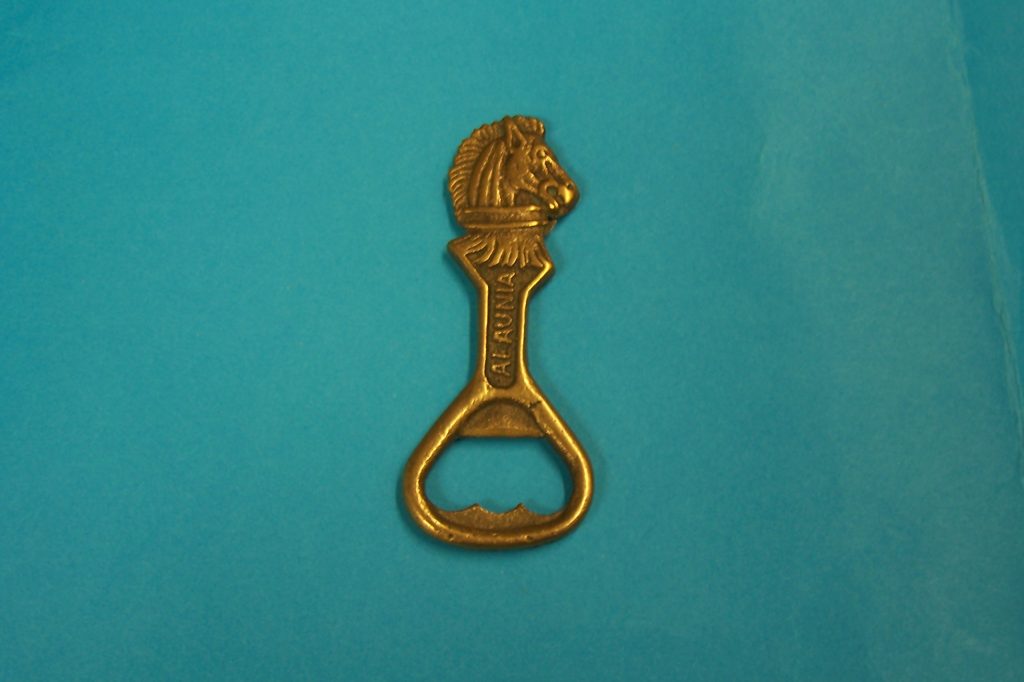HMS Ausonia Ships Bell
The 1944 ships bell from HMS Ausonia. Measuring 19 inches in diameters and 20 inches high, it weighs a massive 55 kilograms.
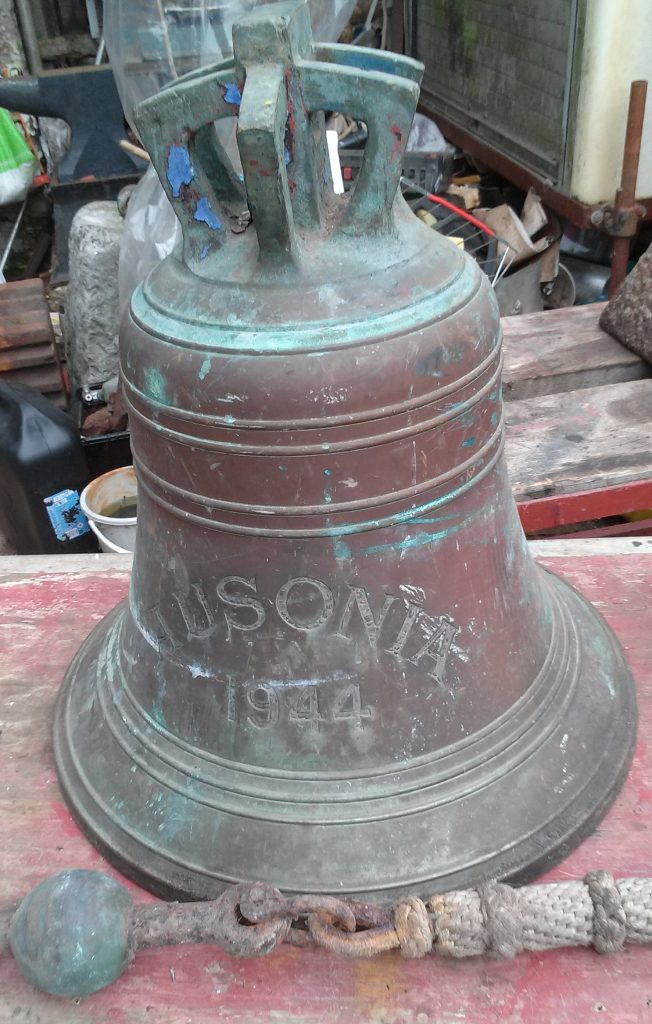
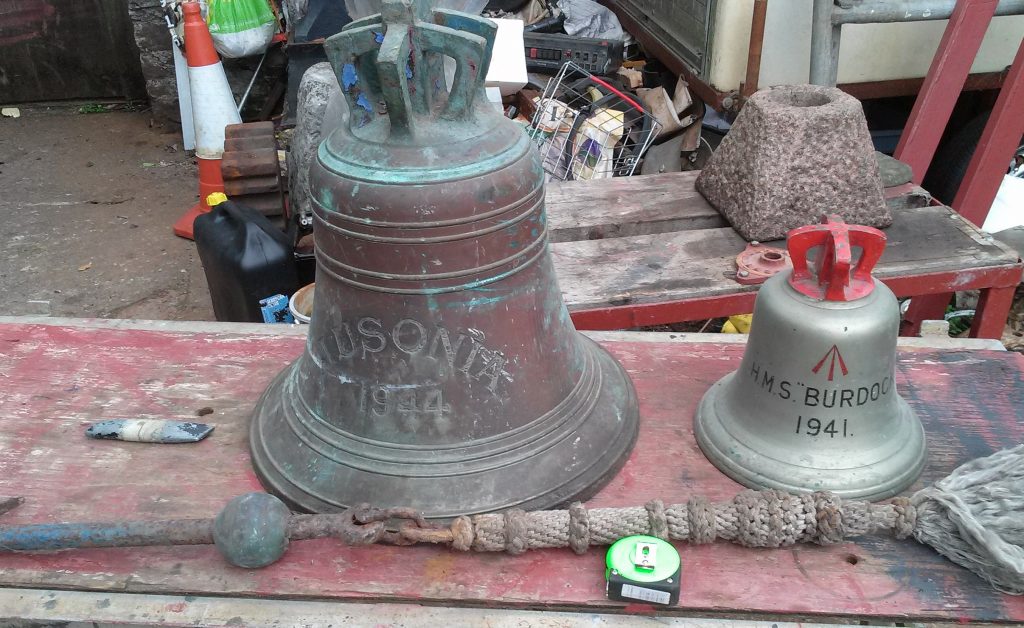
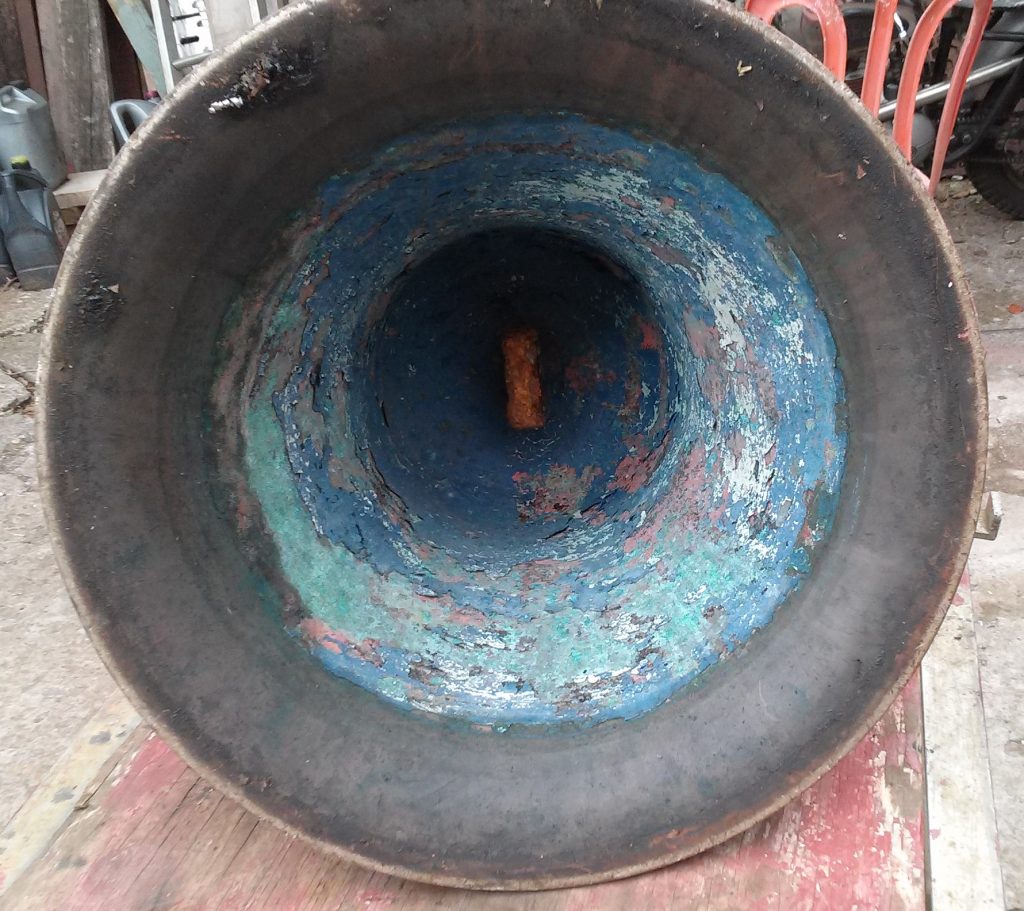
HMS Ausonia Ships Crest
Metal HMS Ausonia ships crest. Reputed to have been made onboard Ausonia, in the ships own foundry, I have no idea when it would have been manufactured. When I acquired this, it was in bare metal and badly corroded; I have mounted it and restored the paint finish.
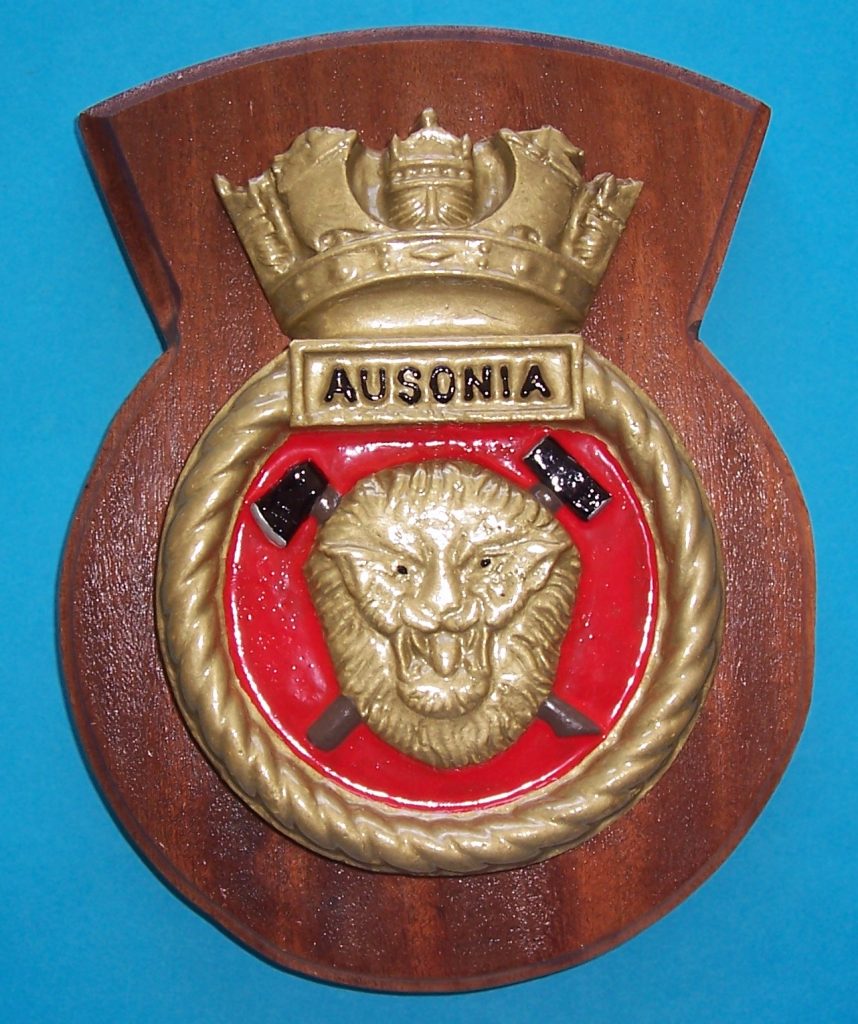
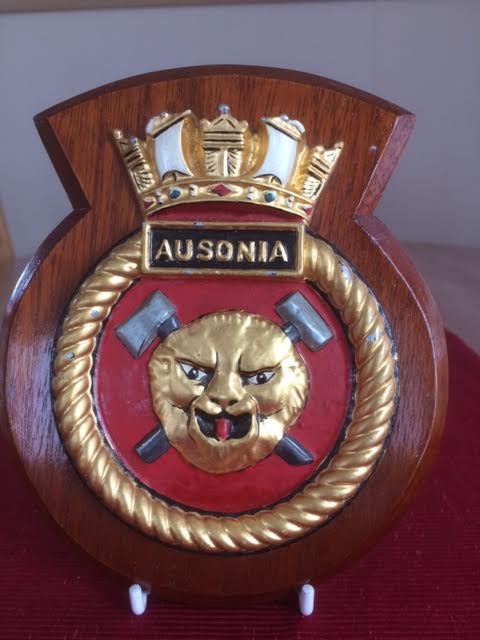
HMS Ausonia cap tally. Difficult to date this, but judging by the fading of the gold stitching and its overall condition, this is an original example.

Not strictly related to HMS Ausonia but amongst the huge collection of Ron Ryder’s wartime memorabilia I found these Daily Orders for returning to Chatham Docks, dated 3rd May 1946. These would have been issued to him on his return journey from Trincomalee to the UK aboard the aircraft carrier, HMS Fencer.
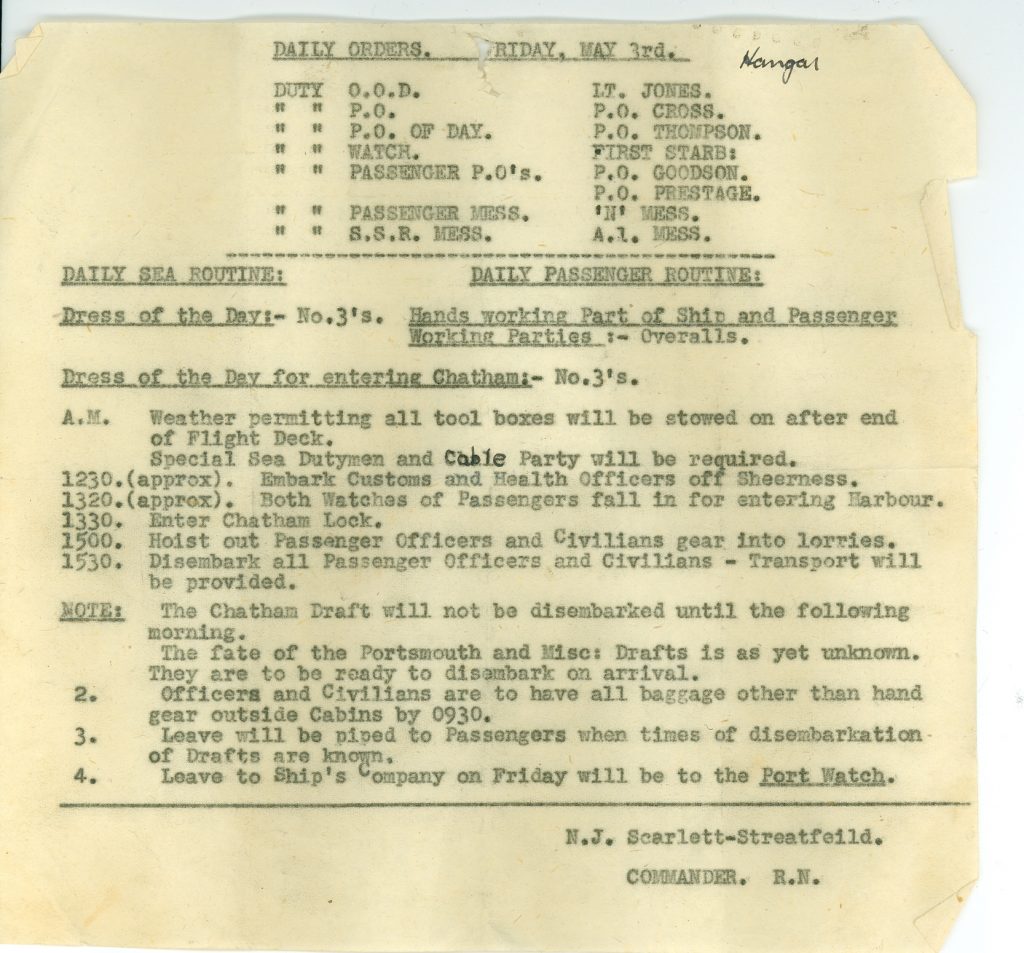
A rare example of a news letter published onboard the Armed Merchant Cruiser HMS Ausonia, called “The Ausonian” with the ships motto Labor Sed Felicitas (The Happiness of Labour) on the front page. Not dated, but it mentions that the ship is now attached to the United States Navy Task Force 2 and will operate under Rear Admiral Cook USN. Task Force 2 was formed on 1st July 1941 to support the defence of Iceland and to escort convoys between the USA and Iceland, so the newspaper would have been produced some time after this and before March 1942 when the ship returned to the UK for conversion to a Heavy Repair Ship.
Although not in the best condition, it has survived and does give an insight into the role that the ship was performing during the early years of the war and includes many interesting facts about the life onboard.
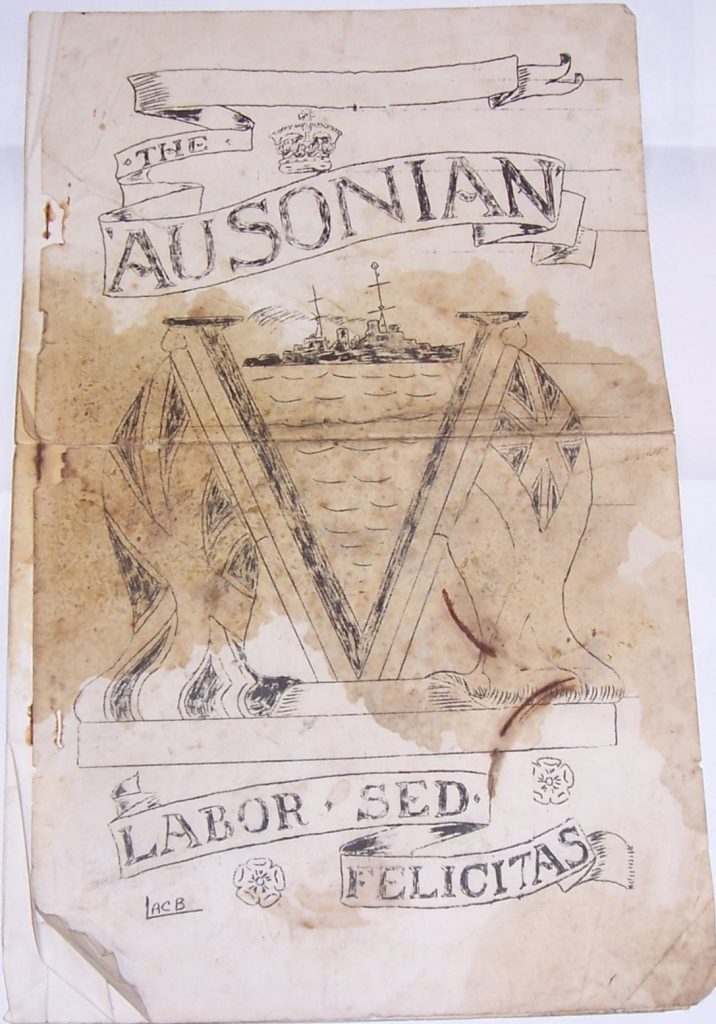
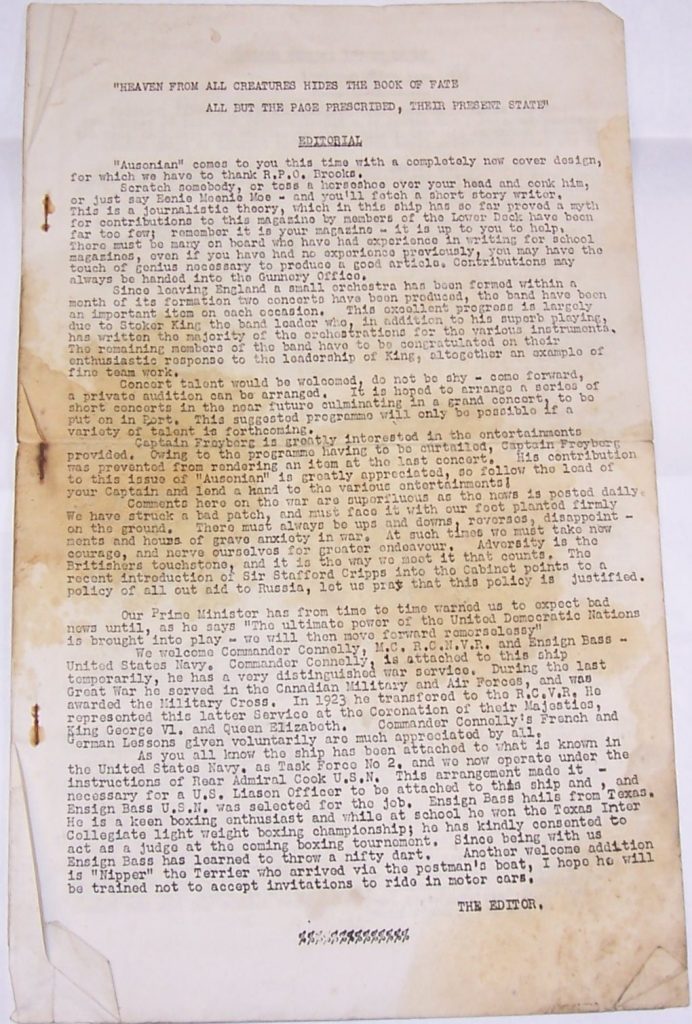
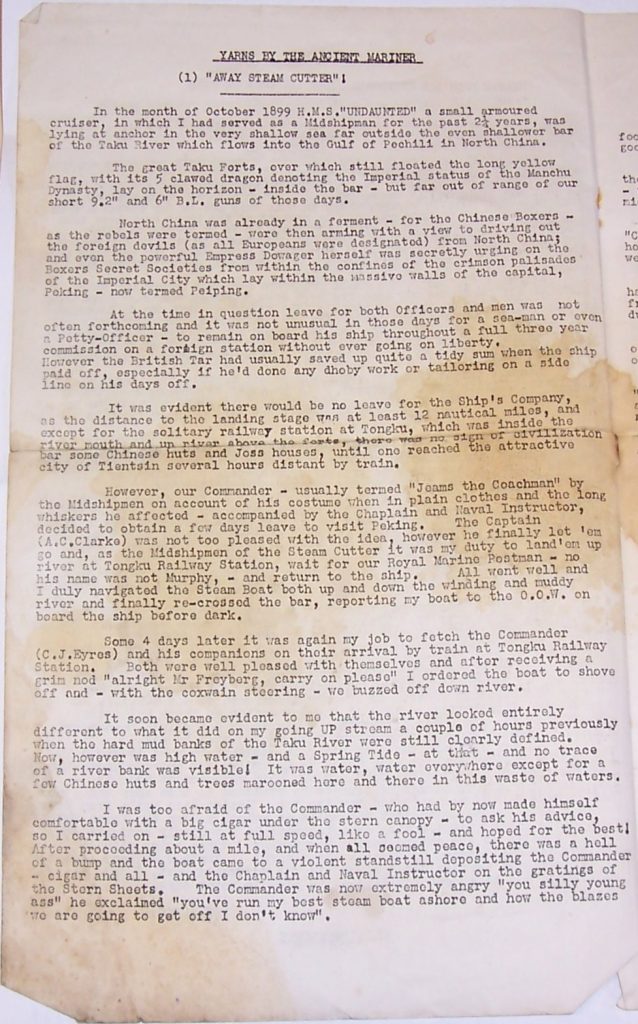
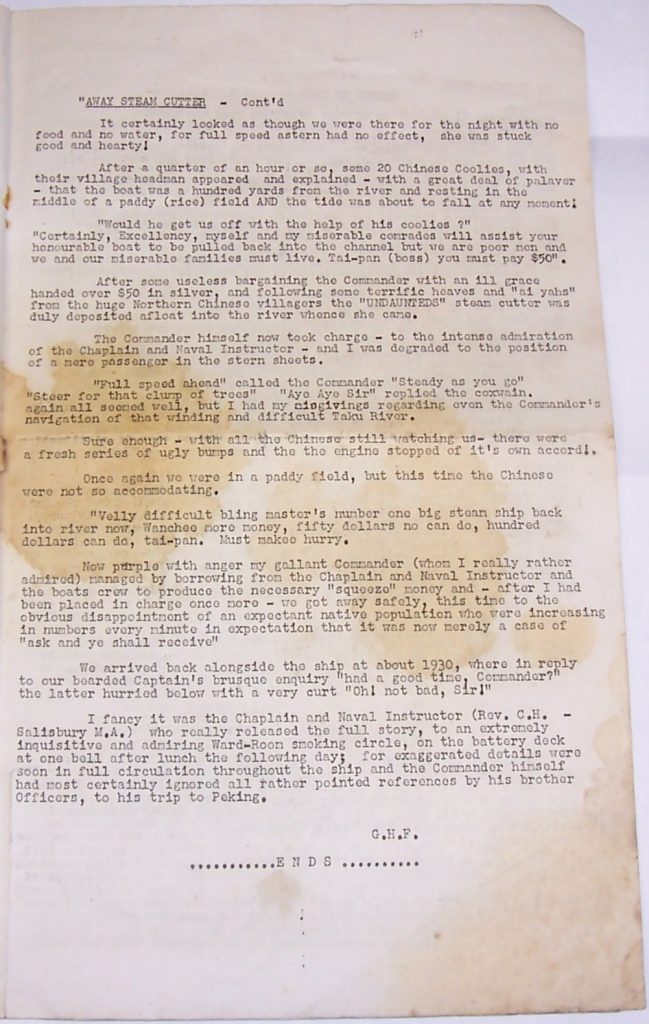
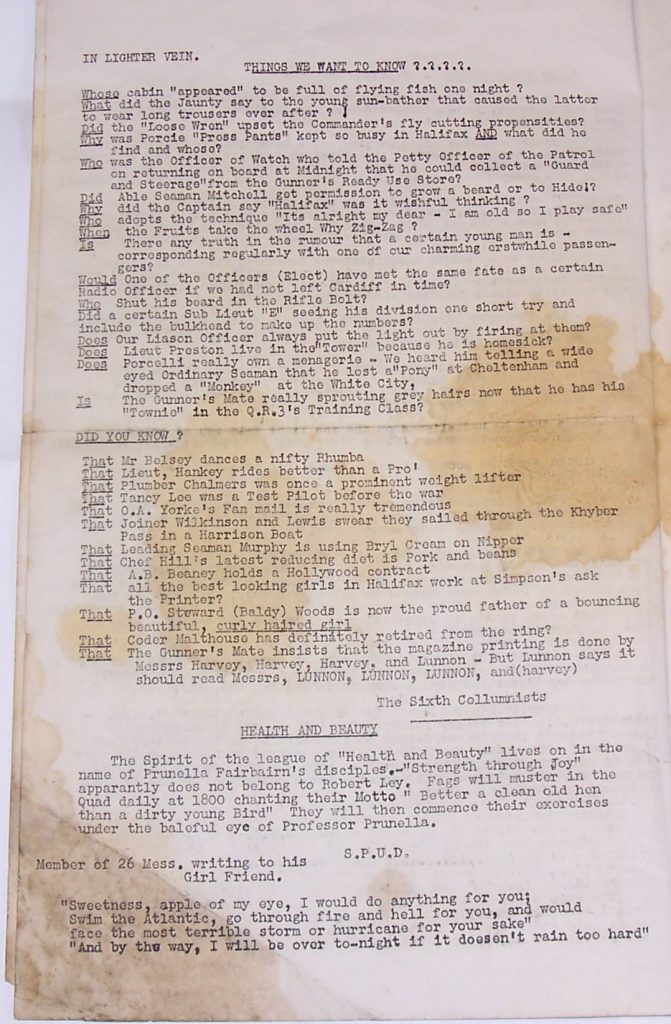
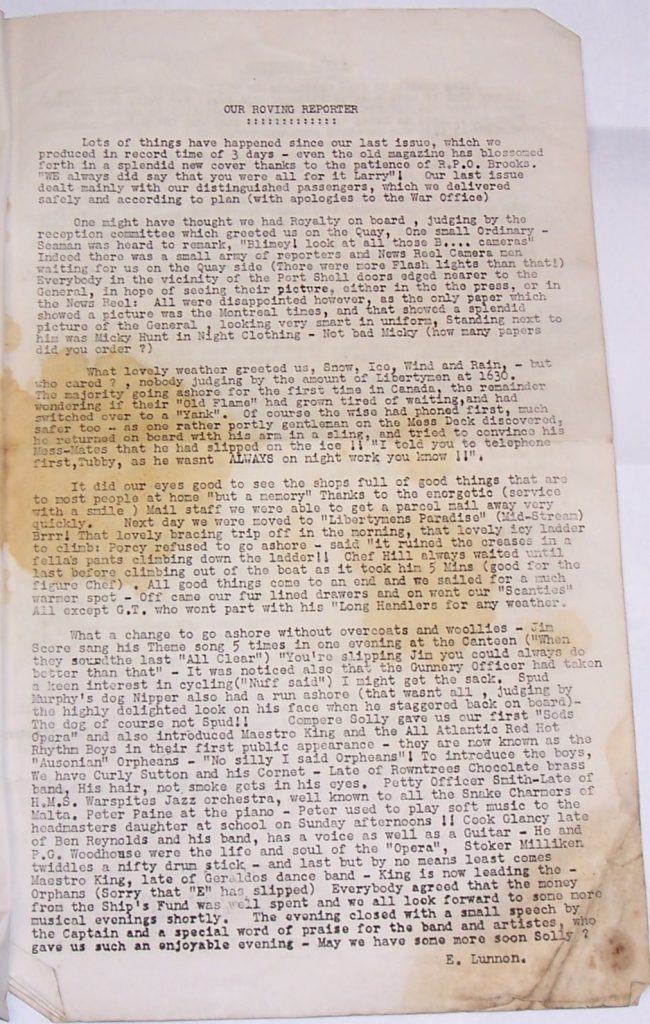

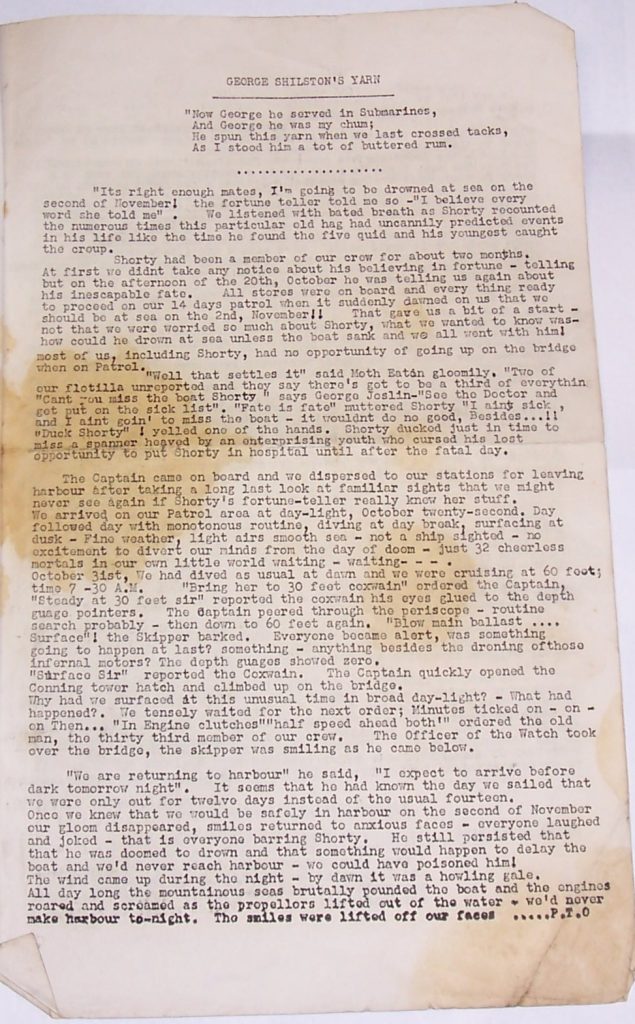
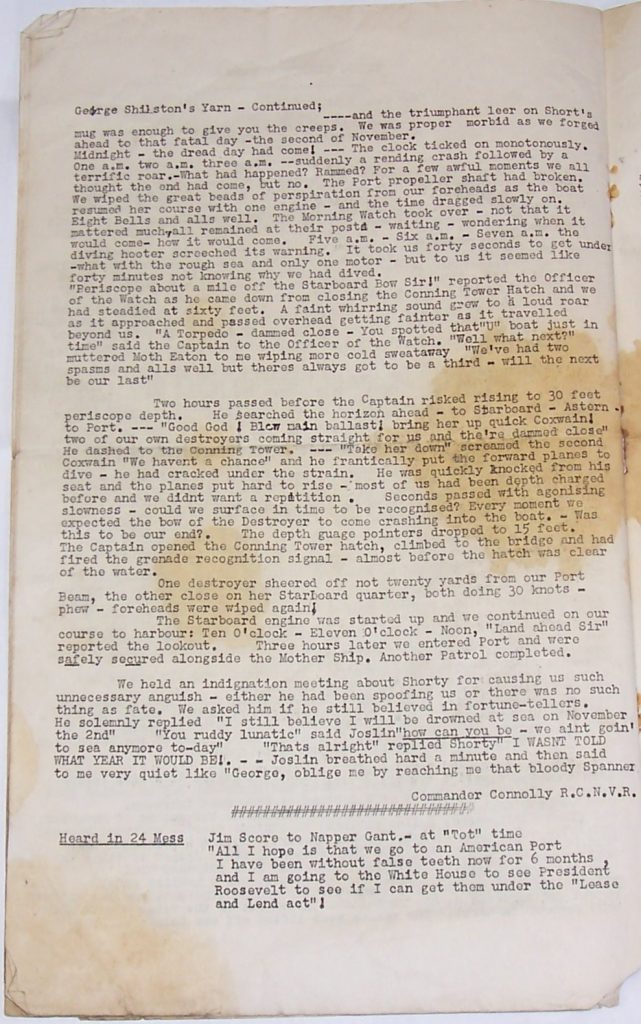
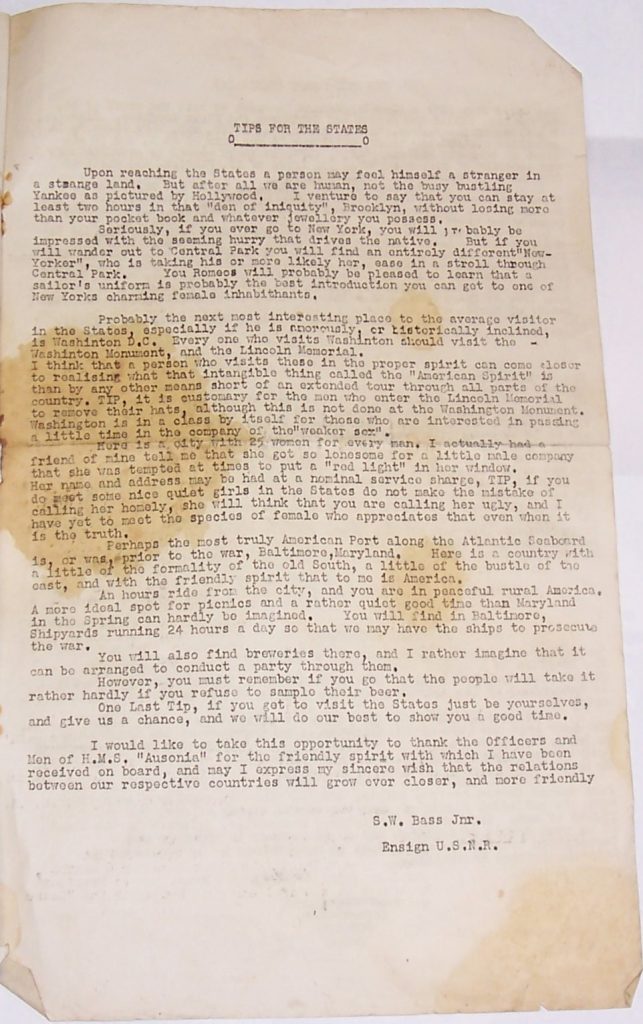

Similar to “The Ausonian”, a rare example of a news letter published by The Times of India Press, Bombay, for the ships company of the Heavy Repair Ship HMS Alaunia. Called the “NEWSAUNIA”, this issue is Volume III, January – April 1943.
Although not in the best condition, it has survived and does give an insight into the role that the ship was performing after conversion to repair ship and gives an insight into the life on board.

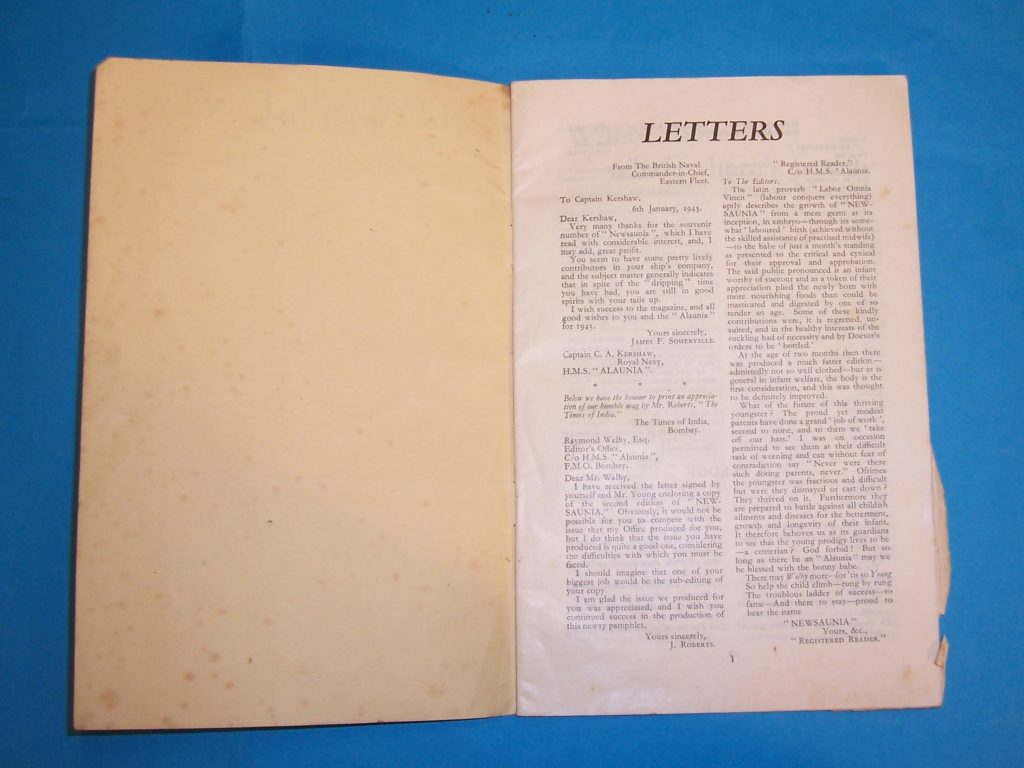

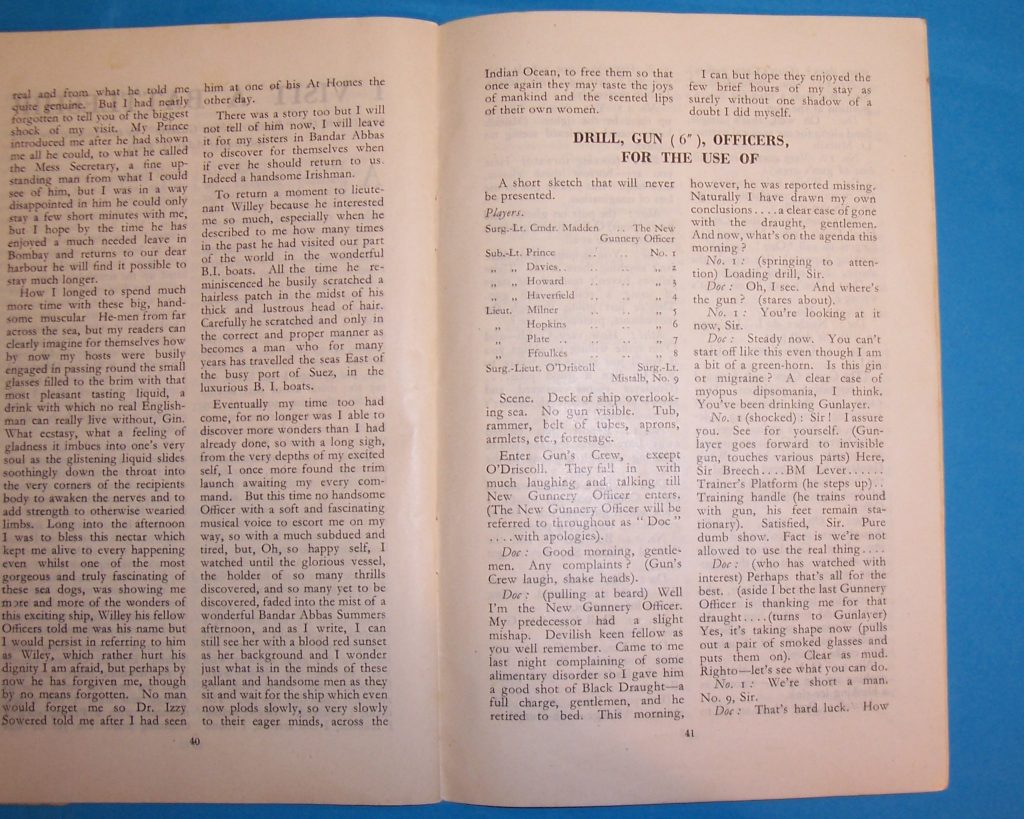
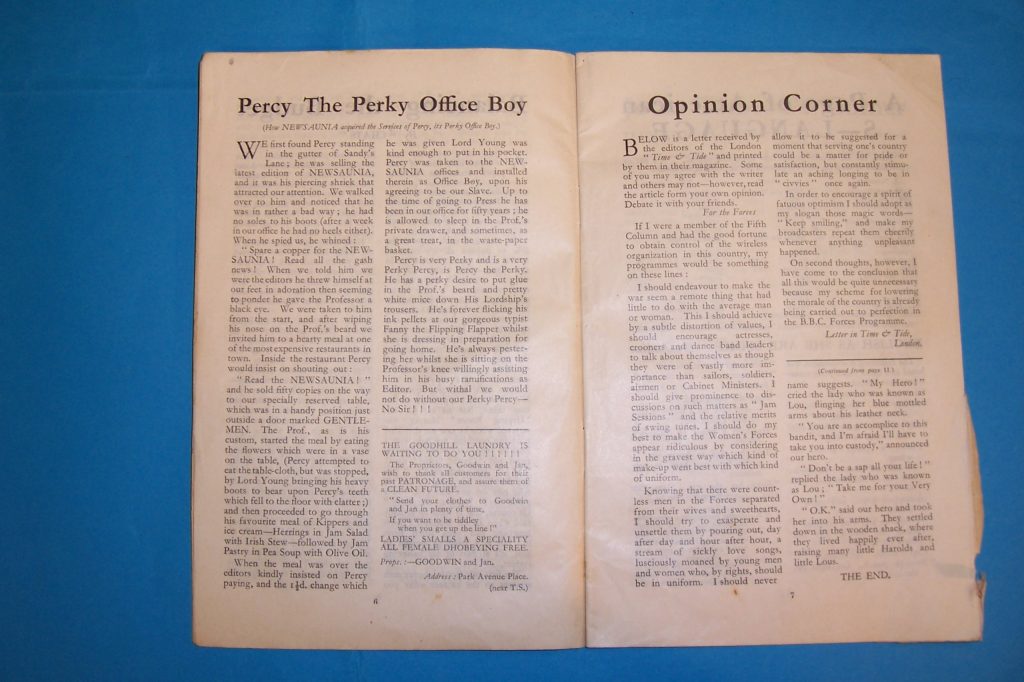
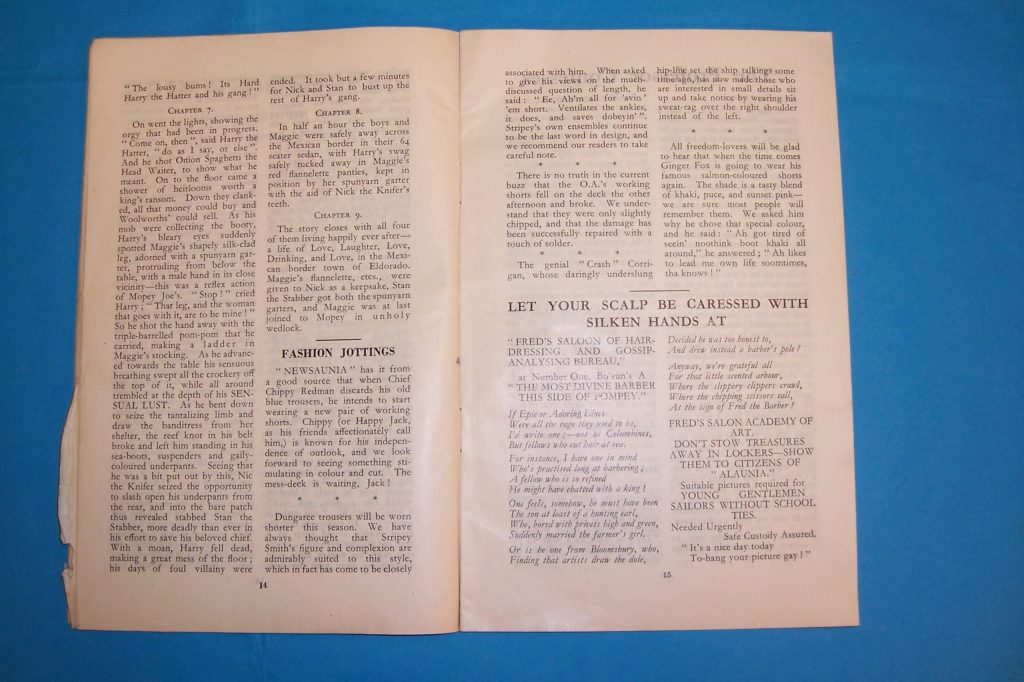
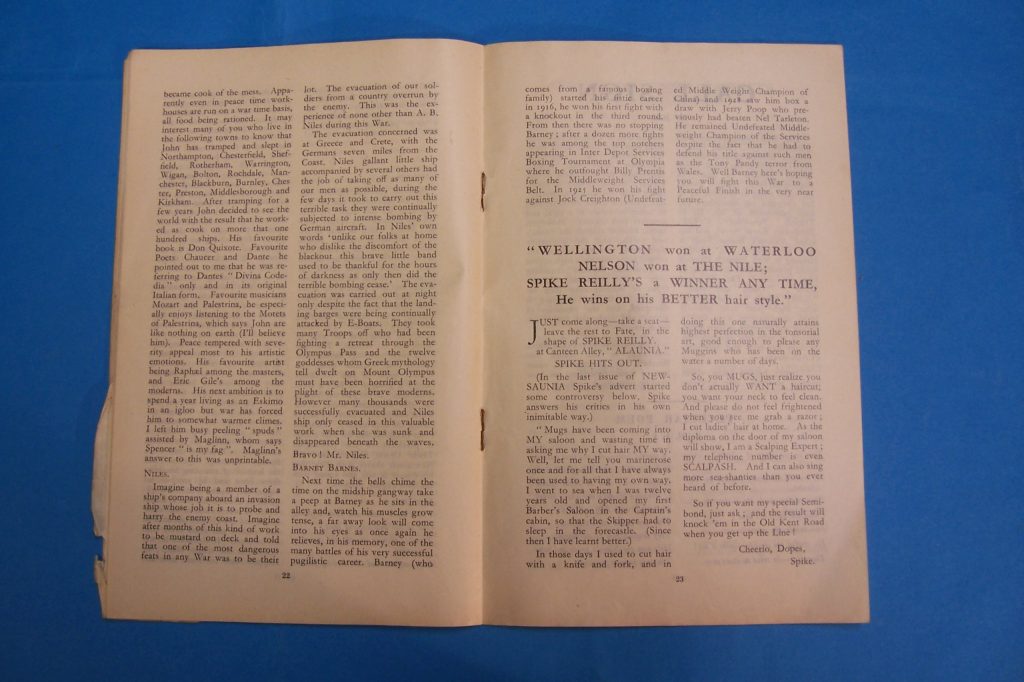
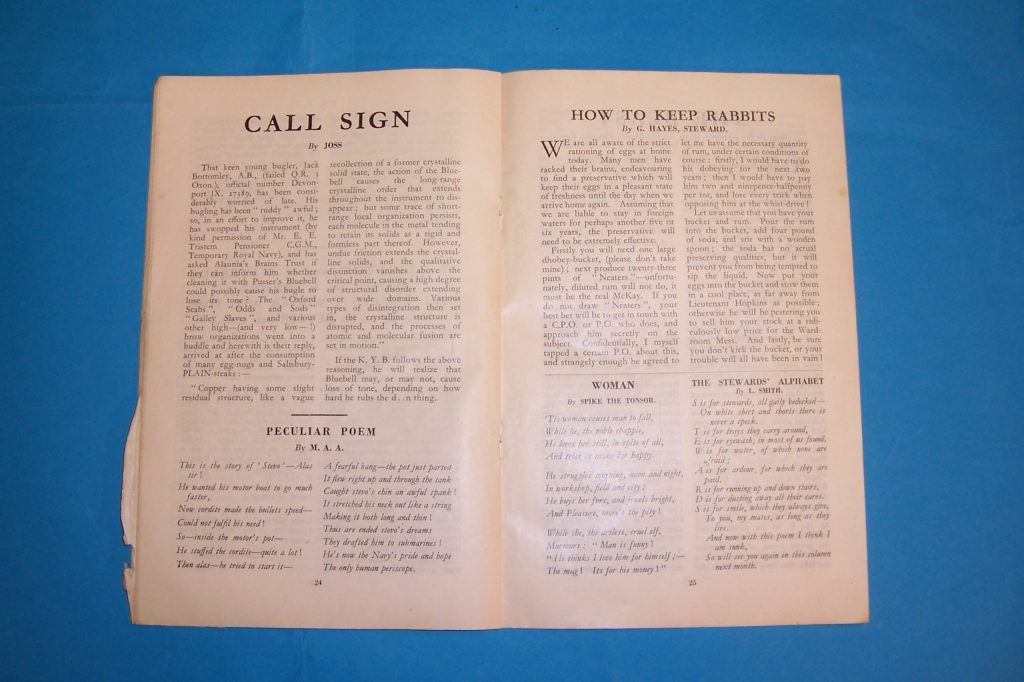
The summary of service 1939-1965, for HMS Ausonia produced by the Naval Historical Branch in August 1981 and passed onto me by Charlie Baker in 1997.
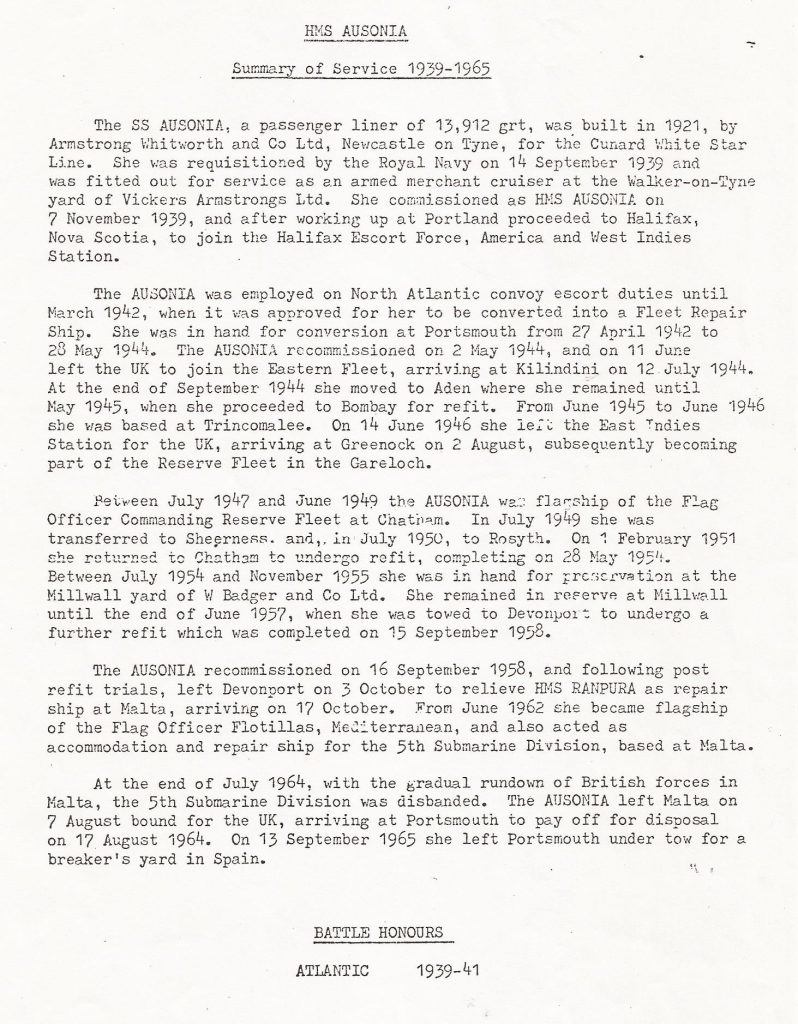
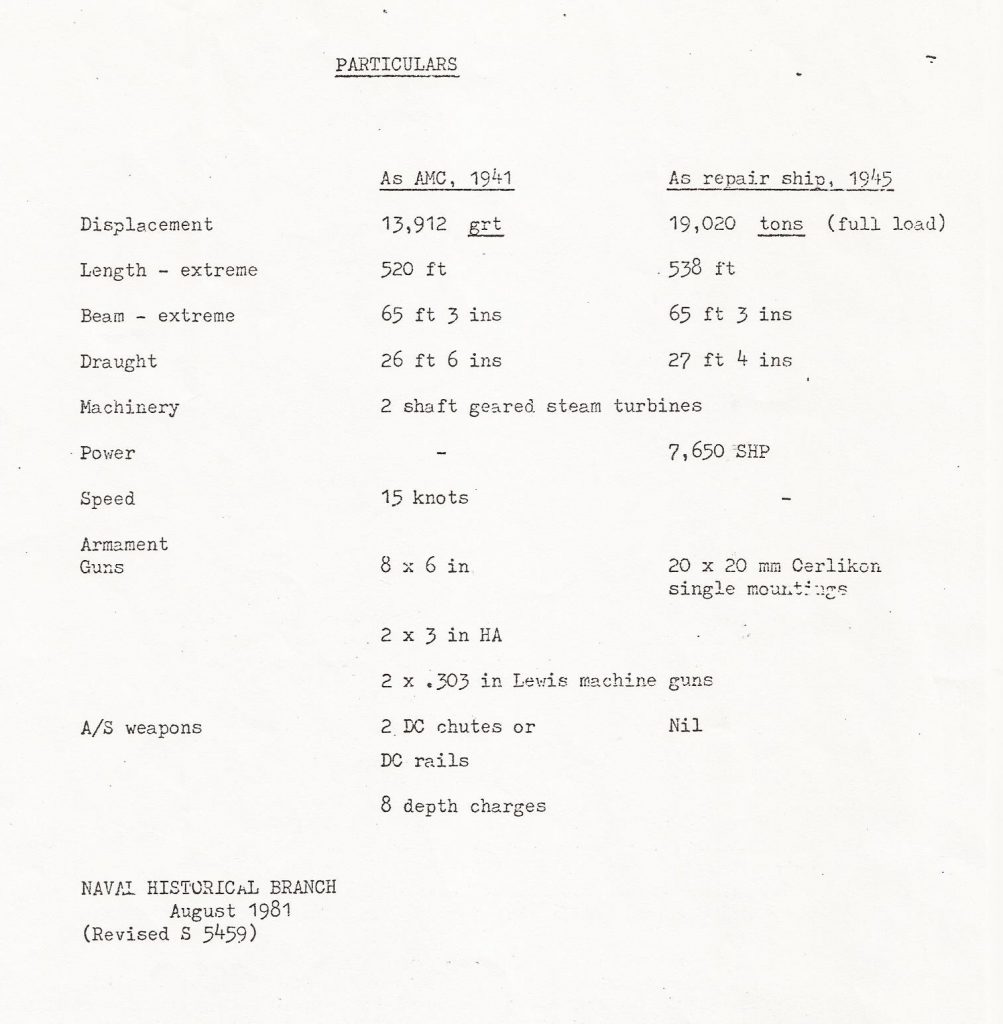
Amongst the huge collection of Ron Ryder’s wartime memorabilia is this rather unusual opened, soft packet of twenty cigarettes. I have no idea why he would have kept these, especially as he did not smoke, but they obviously had some significance to him.
Made by the Java Tobacco Factory and dated 1942. The cigarettes are of Indonesian make with ‘ROKOK’ meaning ‘cigarette’ and ‘SEMANGAT’ meaning ‘zest’ or ‘spirit’ printed on the front of the packet. Above this is a brown and cream image showing three armed Japanese soldiers. Along each side of the packet is written ’20 Batang’, ‘Batang’ meaning ‘stick’, indicating the number of cigarettes in the packet. The reverse of the packet is again marked ‘ROKOK SEMANGAT’. Underneath this are Japanese characters which translate into ‘JAVA TOBACCO FACTORY’. There is an adhesive seal over the opening of the packet with Japanese characters indicating ‘FOR MILITARY USE’. The cigarettes were intended for use by Japanese military personnel during the Second World War but the Japanese also issued these to British and Australian prisoners of war.
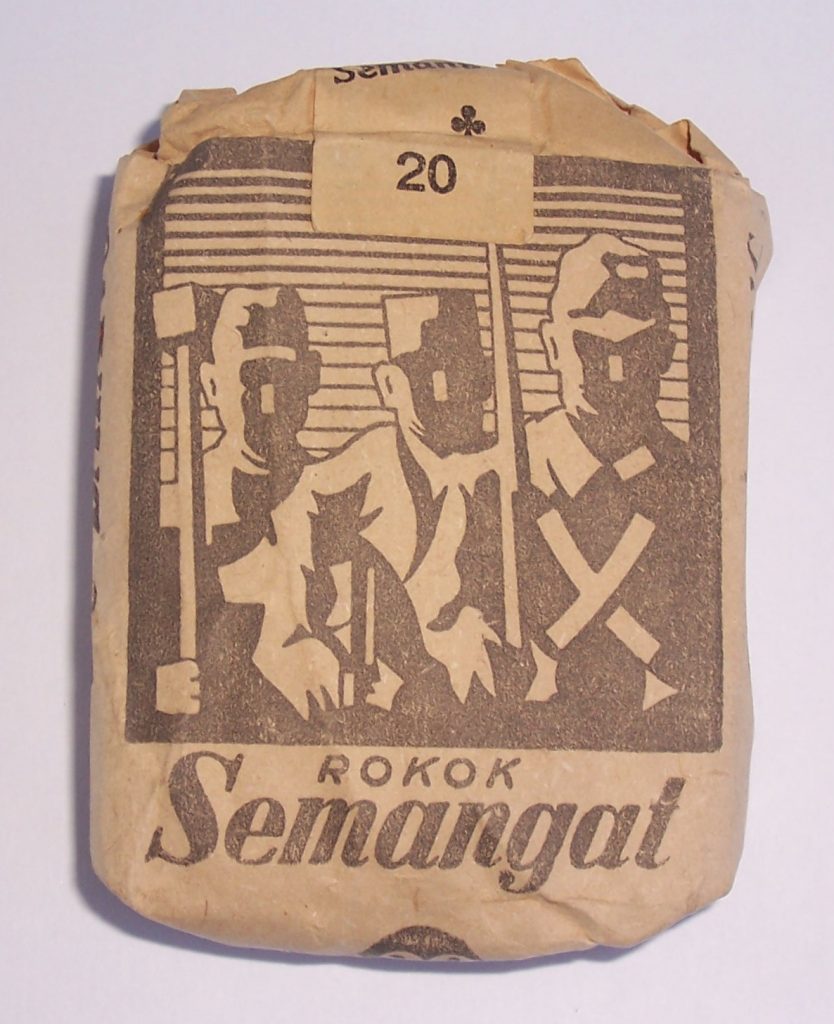
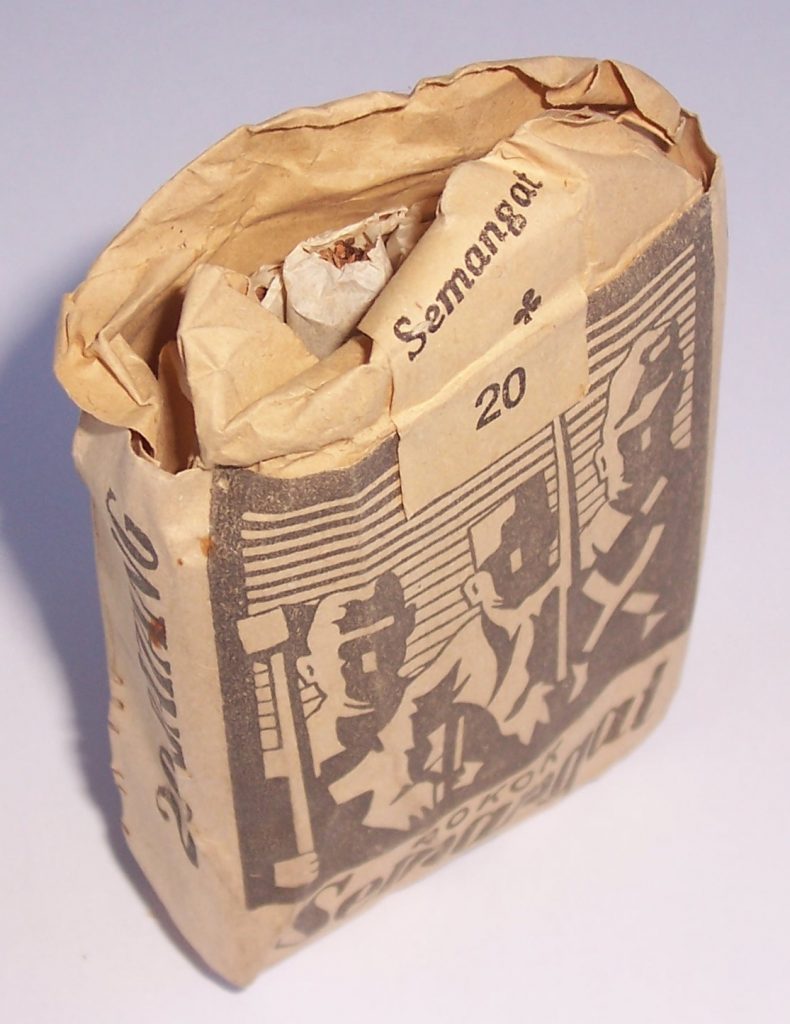
Wooden chest that Ron Ryder converted from a crate onboard HMS Ausonia and used to send his collection of Ceylon wooden elephants home to the UK in 1946.
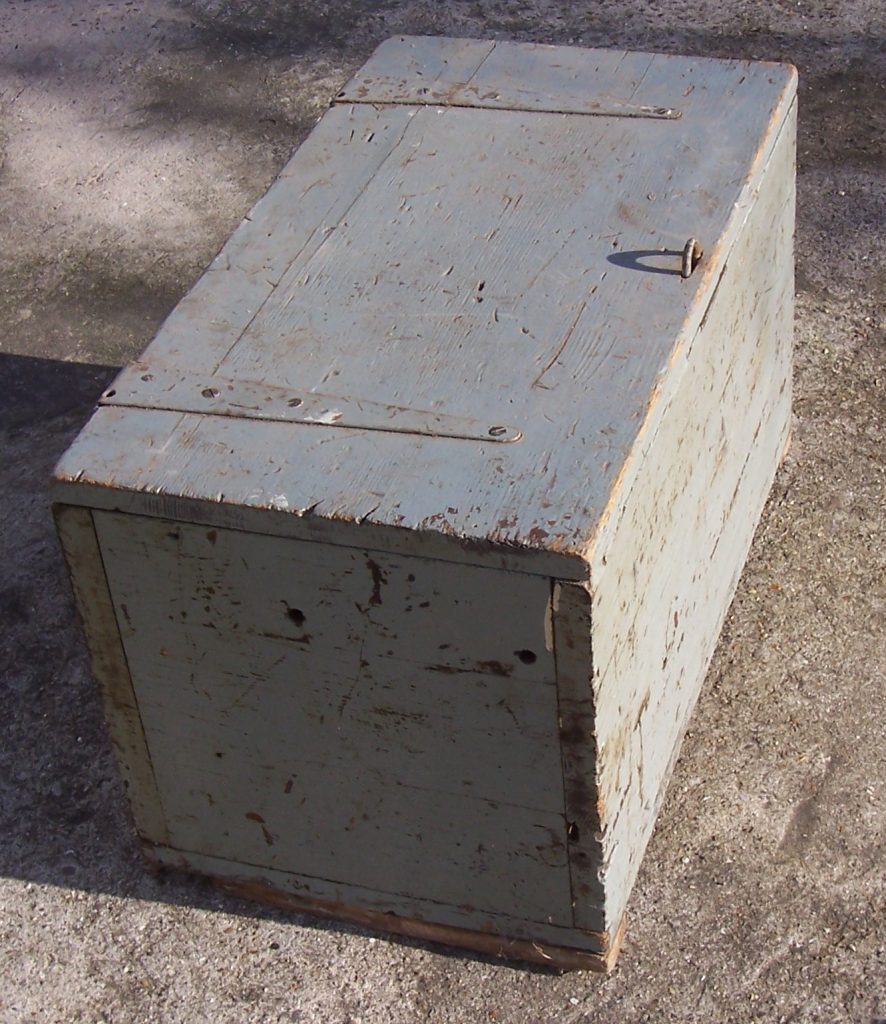
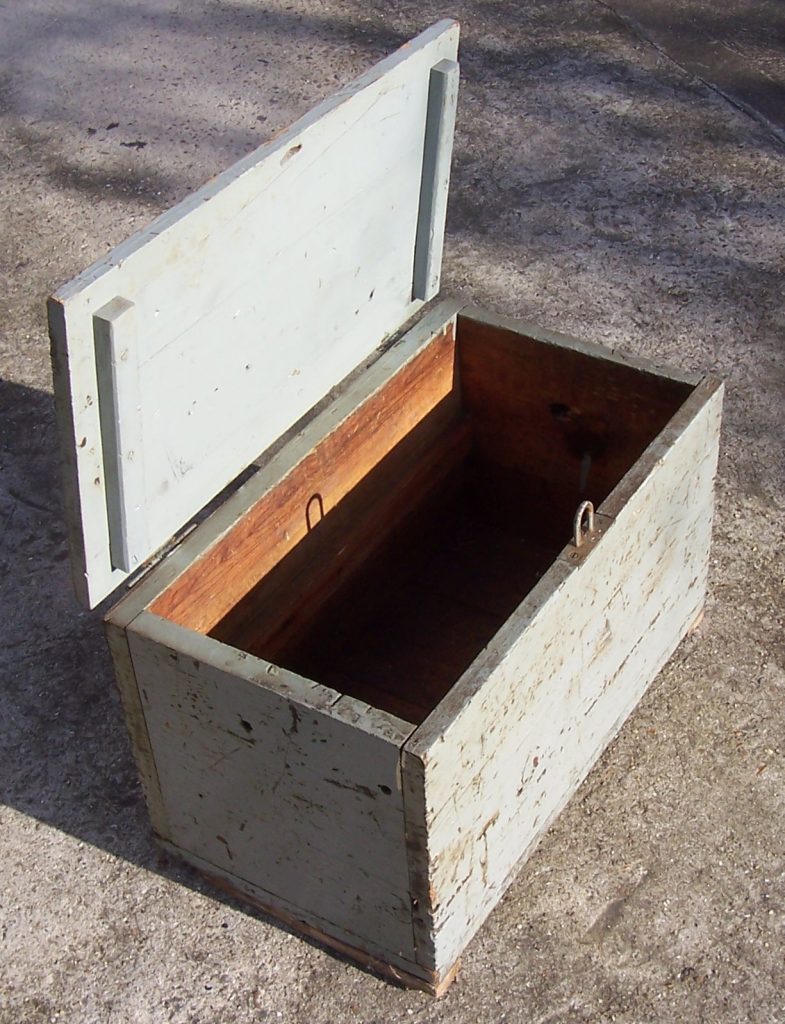
The wooden tool chest that Ron Ryder made while onboard HMS Ausonia in 1945. He used this while onboard ship and continued to use it in his garage for the next 60 years. (I have recently given it a fresh coat of paint).

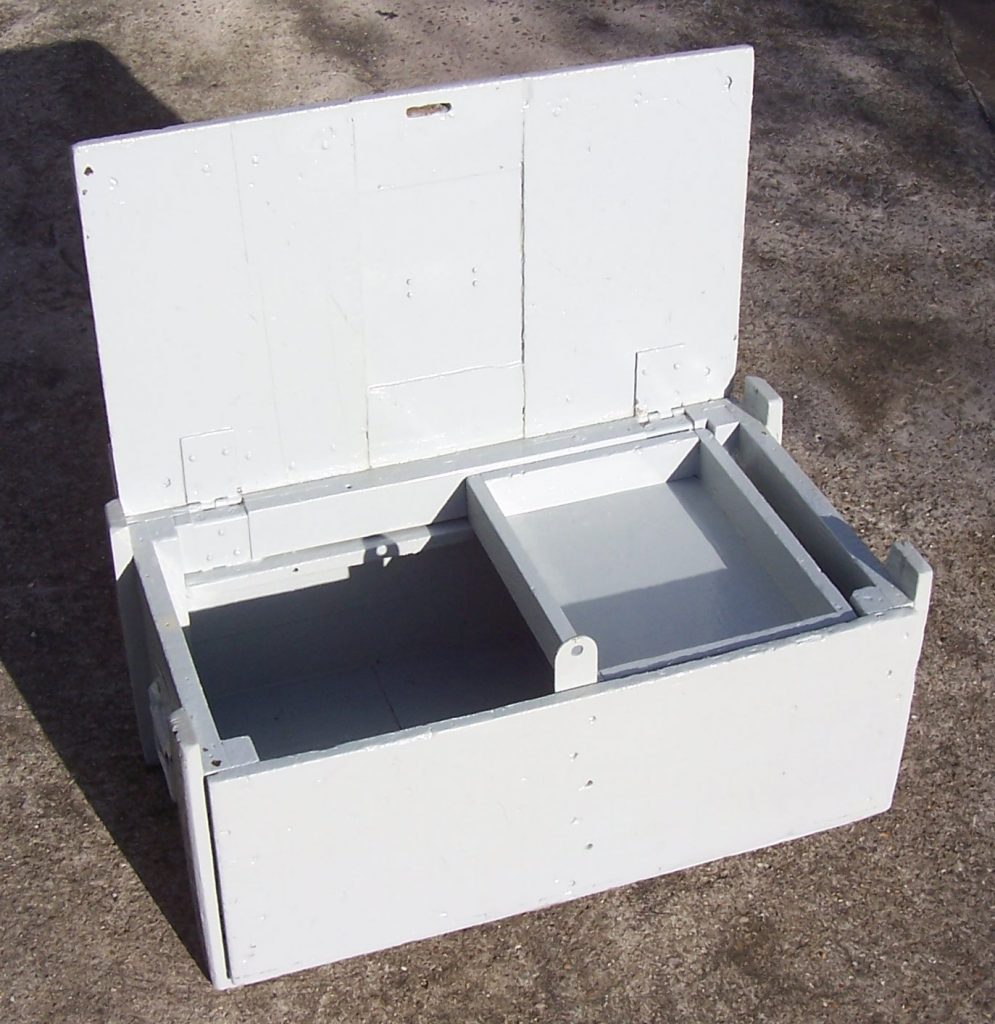
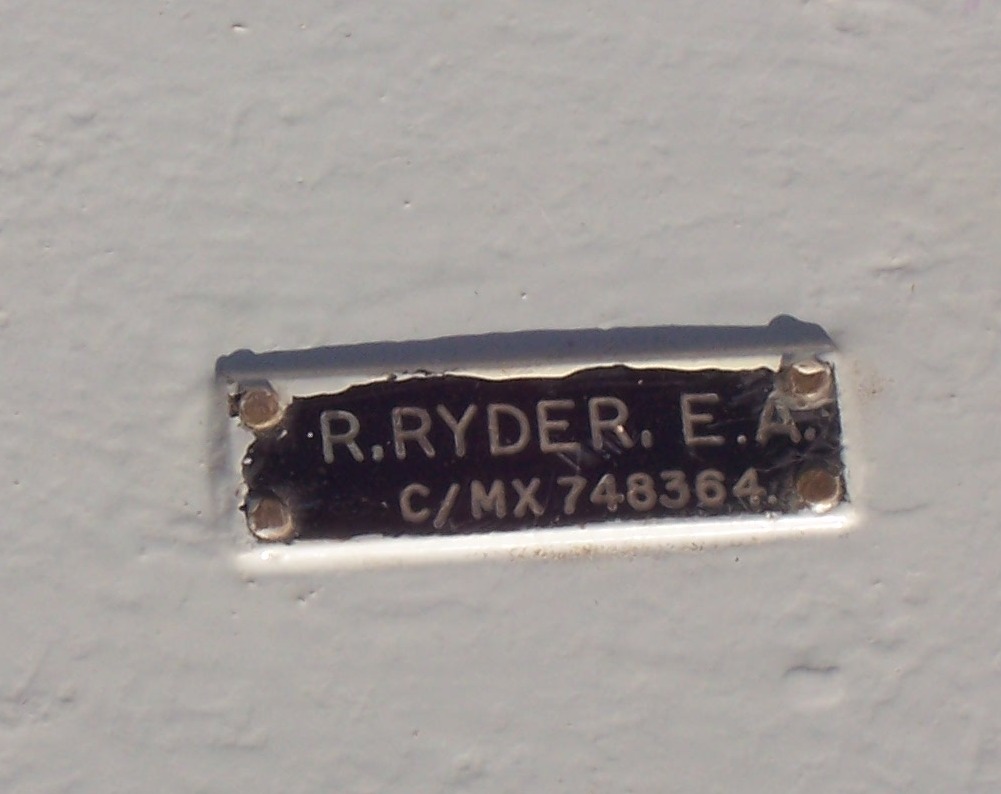
The two trinket pots made from local wood, that Ron Ryder made in his free time using his lathe onboard HMS Ausonia.
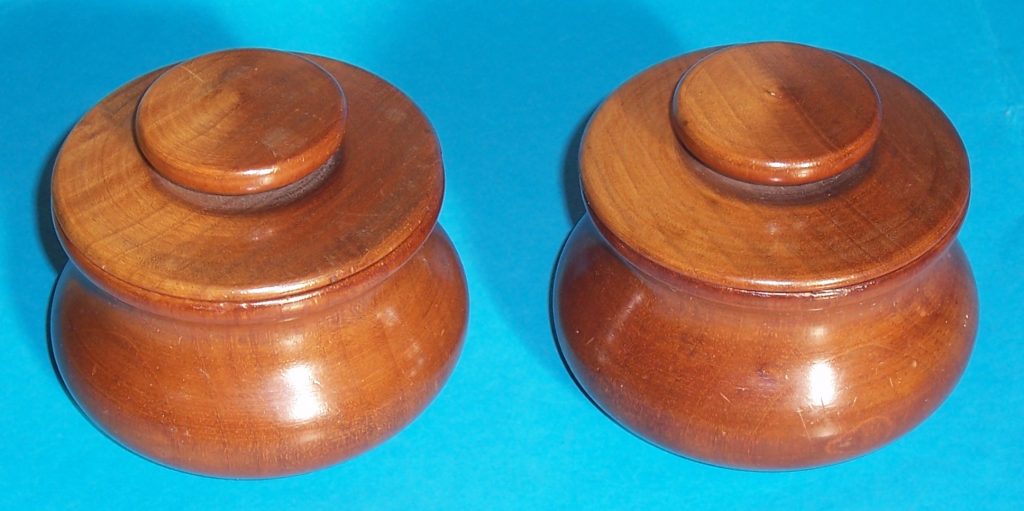
The metal hat box that Ron Ryder had onboard HMS Ausonia.

The Petty Officers hat that Ron Ryder kept after his demob in 1946.
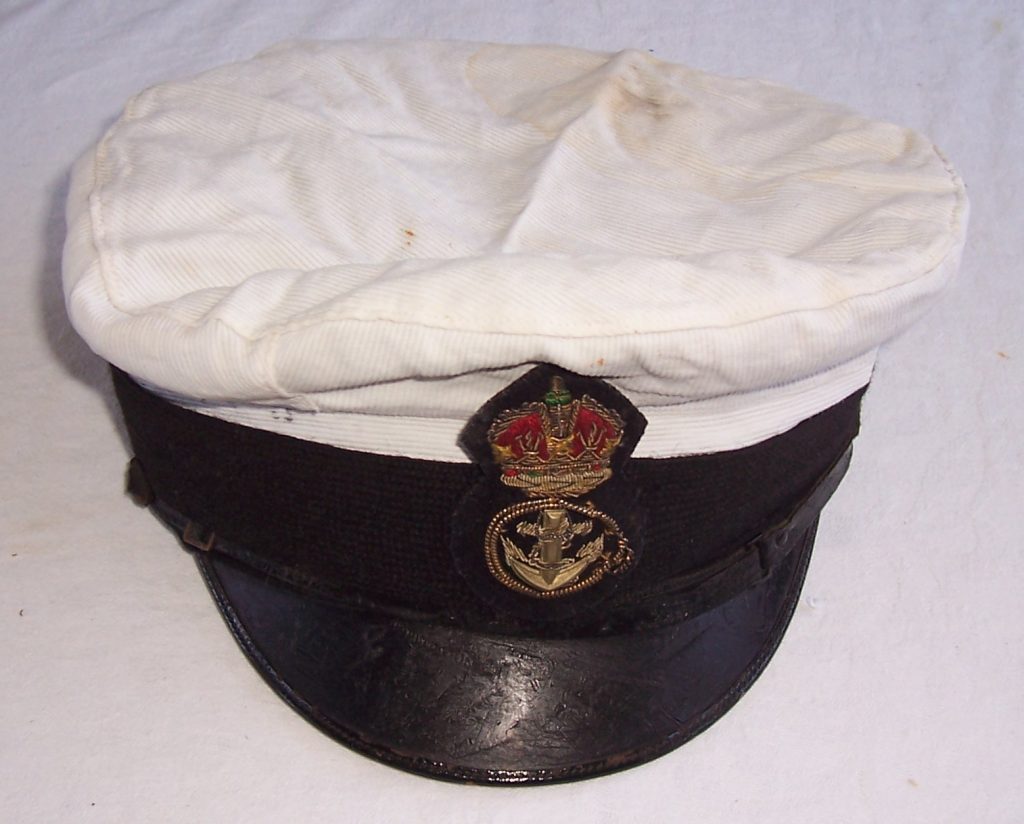
The wartime leather dog tags that Ron Ryder kept after his demob in 1946.

Petty Officer cap and arm badges that Ron Ryder kept after his demob in 1946.
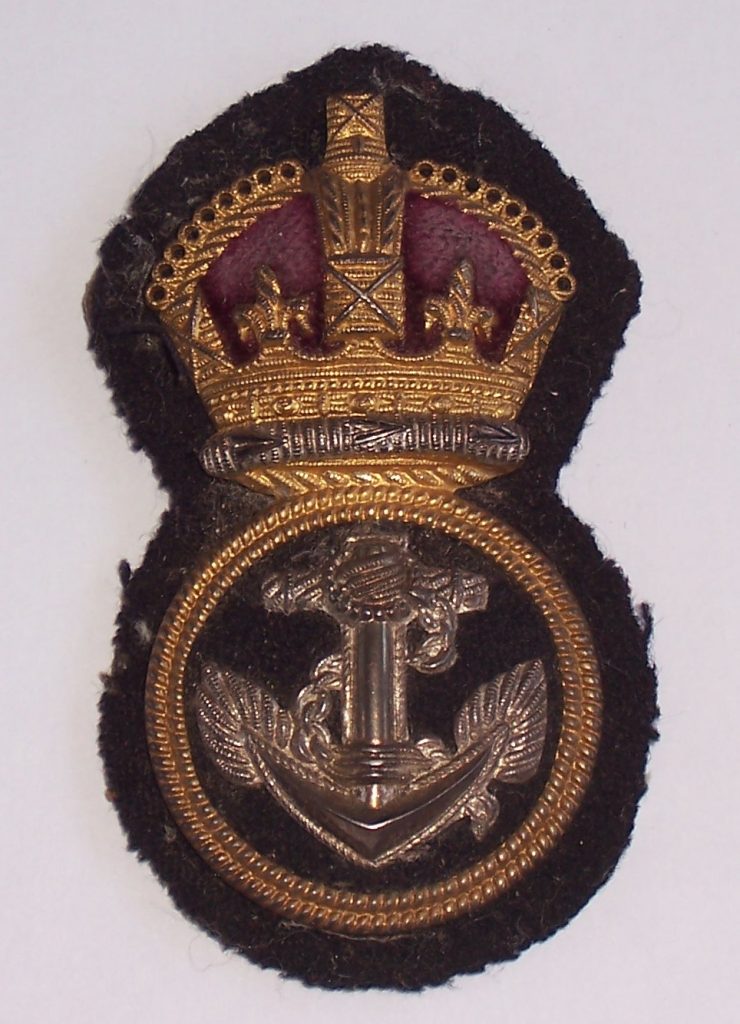
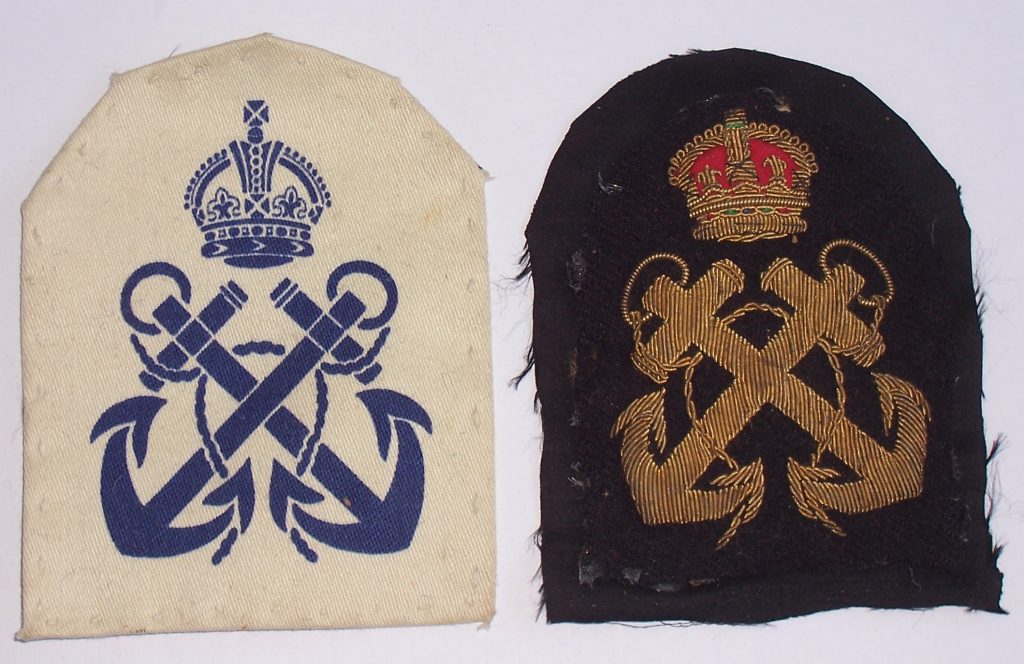
The Royal Navy clasp knife that Ron Ryder kept after his demob in 1946.
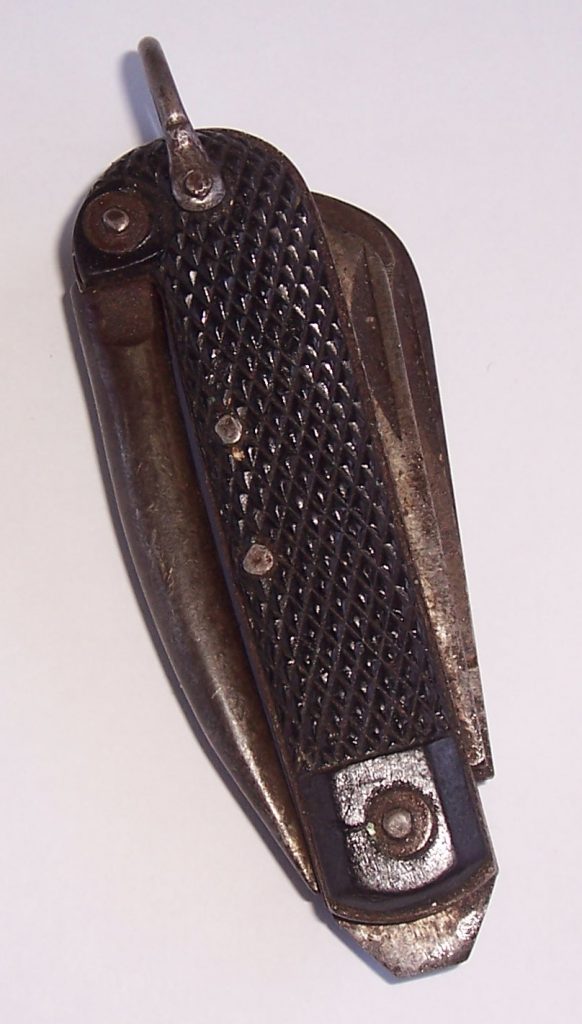
The Royal Navy Seamans Pocket Book, dated June 1943 that Ron Ryder kept after his demob in 1946.
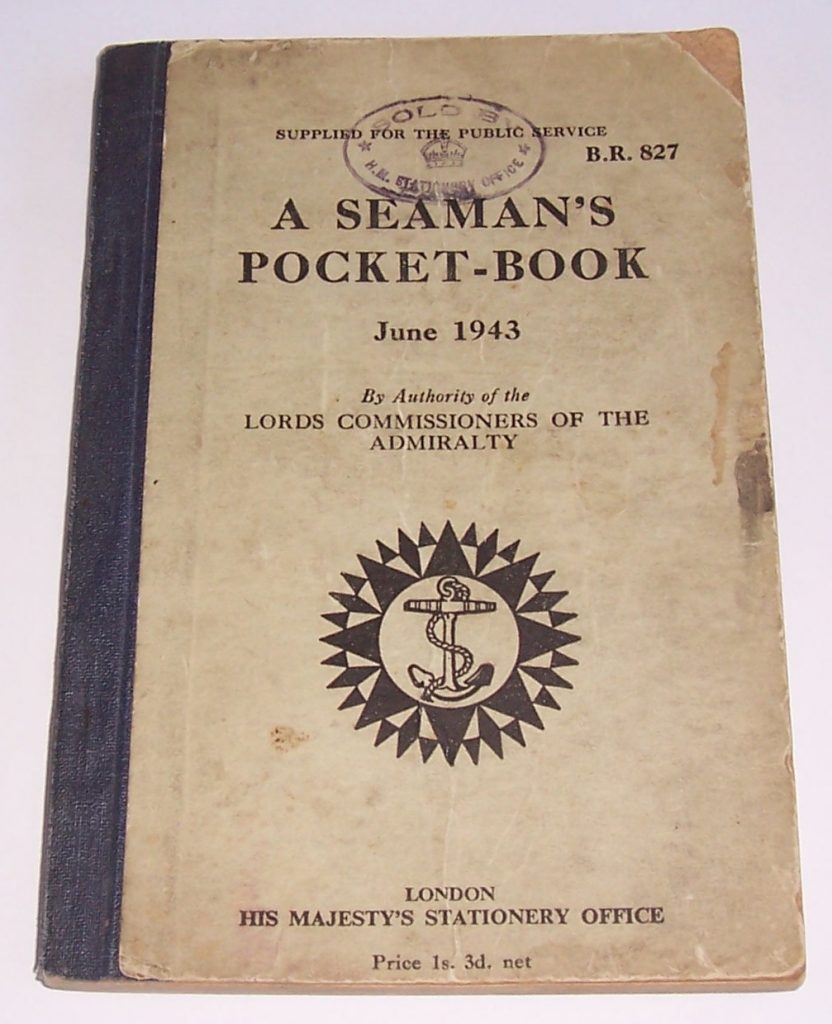
The Royal Navy First Aid Book, dated 1943 that Ron Ryder kept after his demob in 1946.
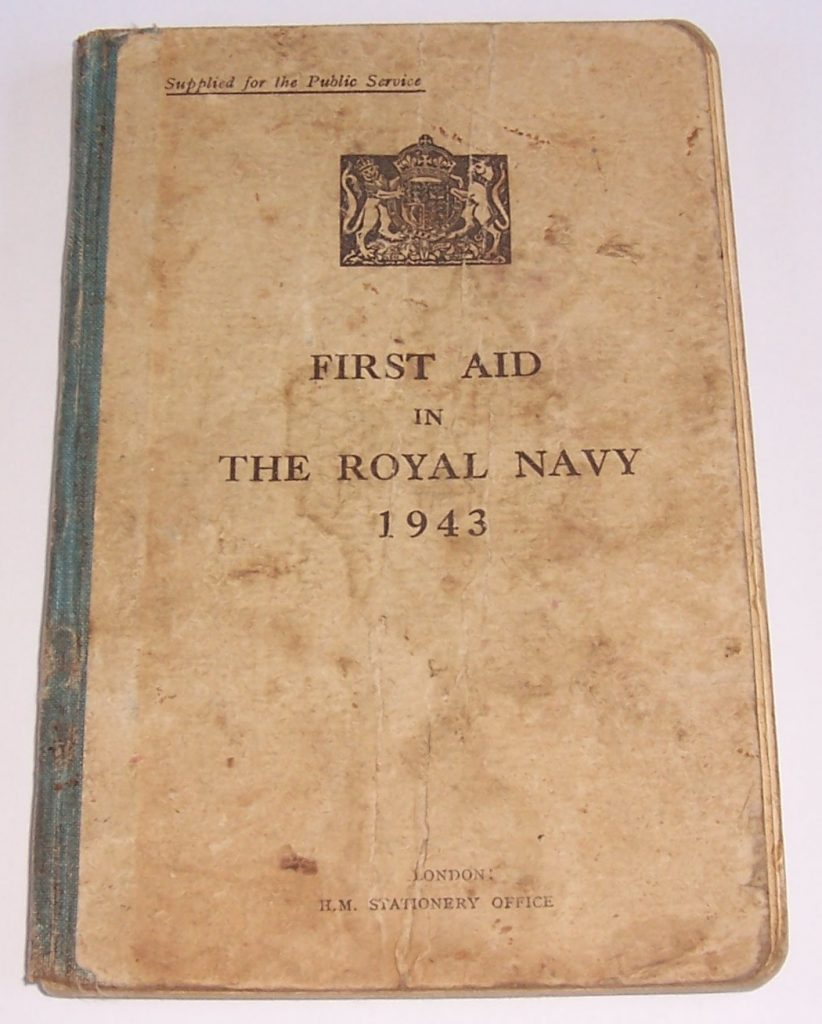
The Royal Navy Electrical Mechanics Tool Kit list that Ron Ryder kept as a souvenir from his days on HMS Ausonia.

The Royal Navy Trade Certificate that Ron Ryder kept as a souvenir from his days on HMS Ausonia.
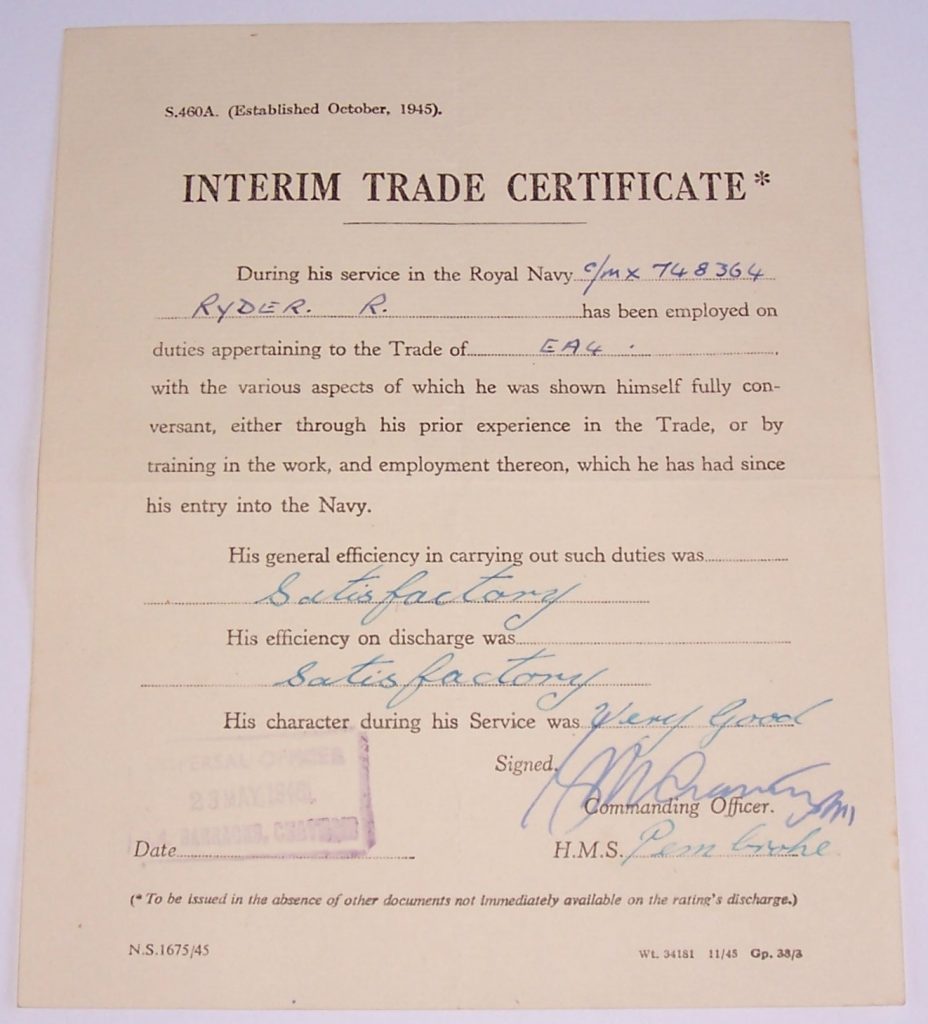
His Royal Navy Certificate of Service and its documents envelope, which Ron Ryder kept as a souvenir from his days on HMS Ausonia.
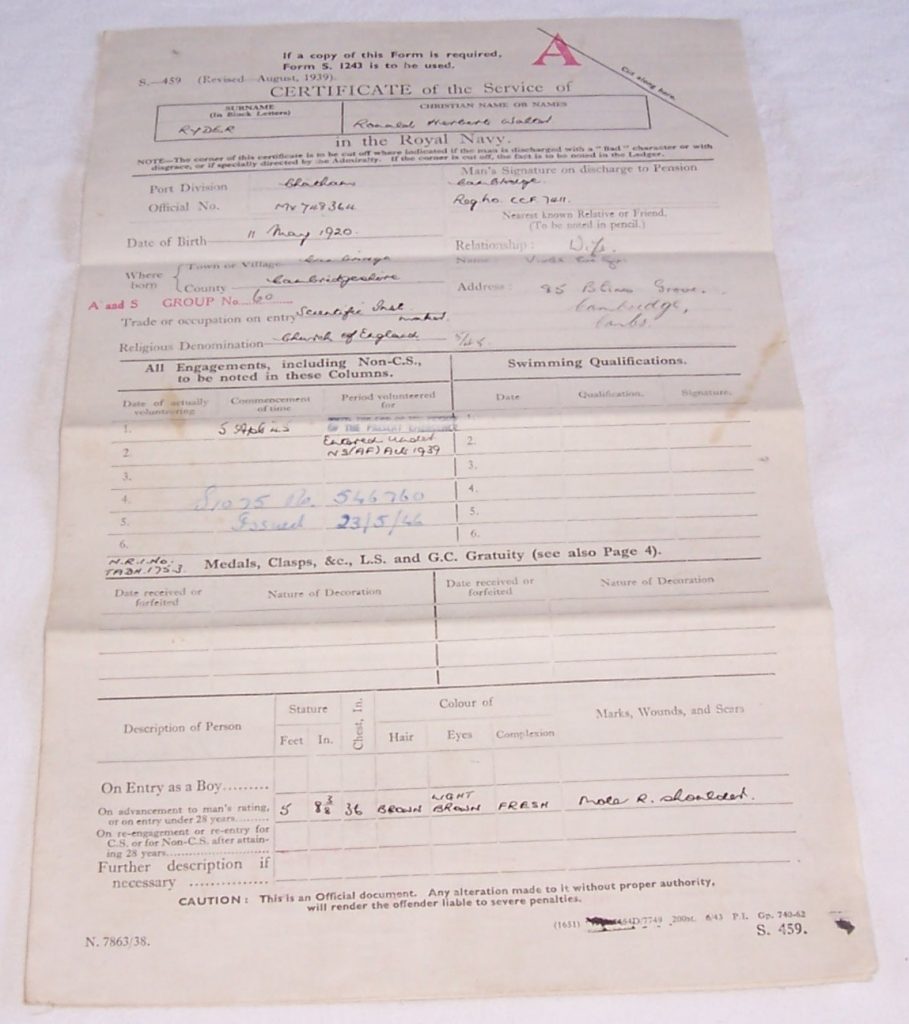

Both the jack and ensign staffs of Royal Navy warships bear a crown at the top, painted in the appropriate regal colours. The jack staff crown, is the naval crown, whilst the one on the ensign staff, is the royal crown. The main difference between the two is that the royal crown has a top formed by intersecting arches, whilst the naval crown does not. Both the royal and naval crowns are made in three sizes (8 inch, 6 inch and 4 ½ inch diameter) to fit the jack and ensign staffs of different sized warships.
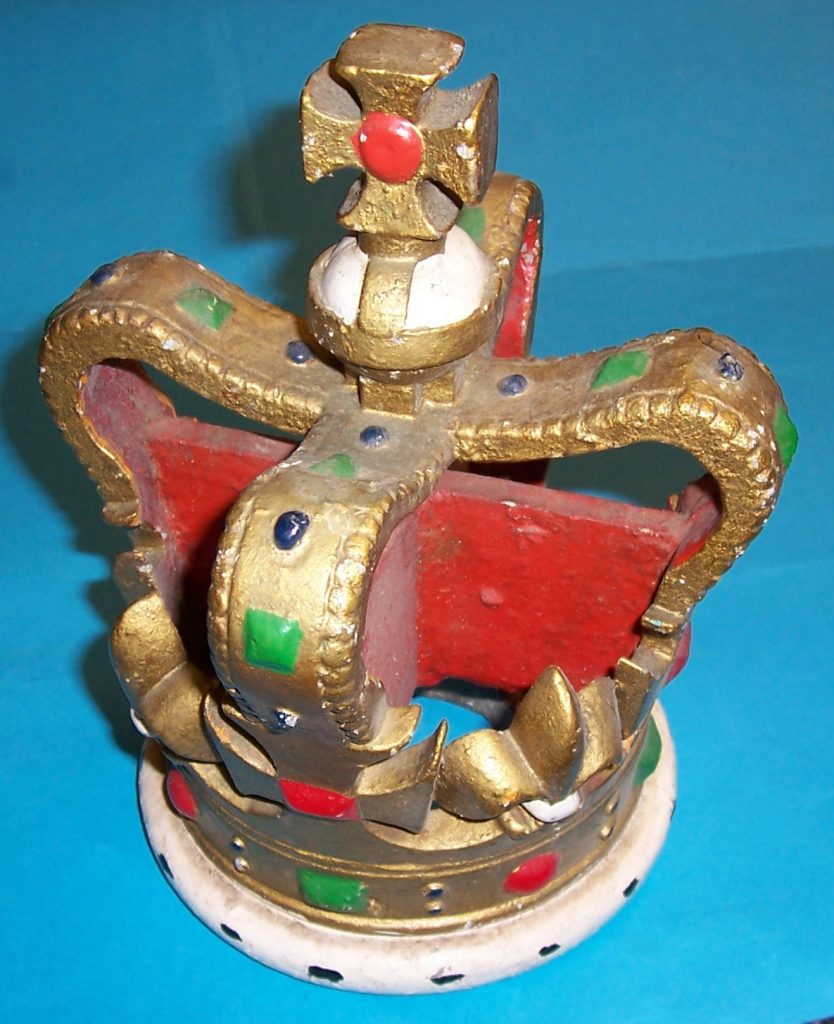
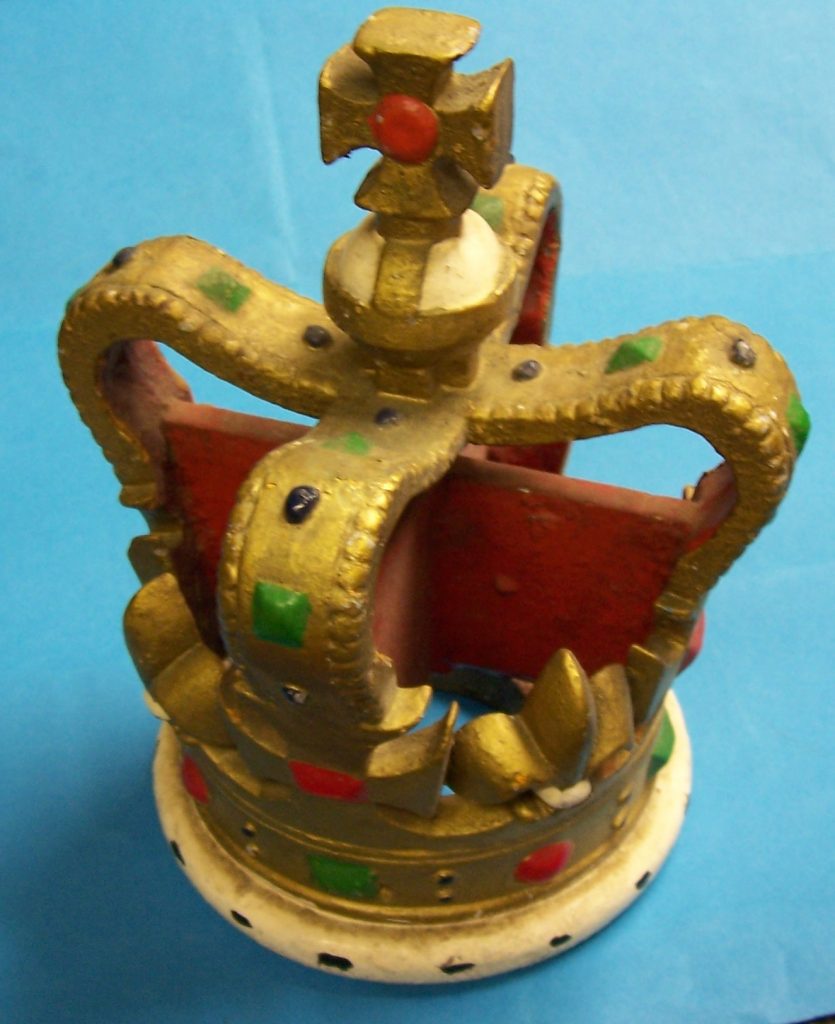
I acquired this ensign crown finial, from a family member in 2016. Measuring 6 inches in diameter and weighing 5.6kg, it was in very poor condition, having sat in his garage for the last thirty years after being rescued from the Portsmouth naval dockyard, sometime in the late 1960’s. As the crown has depressed arches at the point of the intersection, it can be identified as the Edwards Royal coronet crown, which means that it is dated after 1953, following the coronation of Queen Elizabeth II. The design used prior to this (adopted by Queen Victoria in 1876) was a royal crown, with raised arches and used as the monarch’s symbol.
The history of this particular crown will never be known, but its size denotes that it was removed from a cruiser sized warship and that the ship was probably based at Portsmouth, based on the fact that it was removed at the Portsmouth naval dockyard.
Throughout the 1950’s and 60’s, hundreds of Royal Navy vessels were de-commissioned and sent for scrap, including all four of the former ‘A’ Class liners, HMS Ausonia, HMS Alaunia, HMS Artifex and HMS Wayland. Part of the de-commissioning process would have been to remove the jack and ensign staff crowns and although it is of the correct size, the chances that this actual crown was removed from any of the former ‘A’ Class liners which were purchased by the admiralty, is of course very slim.
The following photographs show the finial in its current condition. It has been shot blasted and repainted in colours that represent the crown in antique gold with rubies, emeralds, pearls and diamonds. It will be noted that two of the fleur-de-lis are missing but whether these were due to battle damage or something more mundane, will never be established.
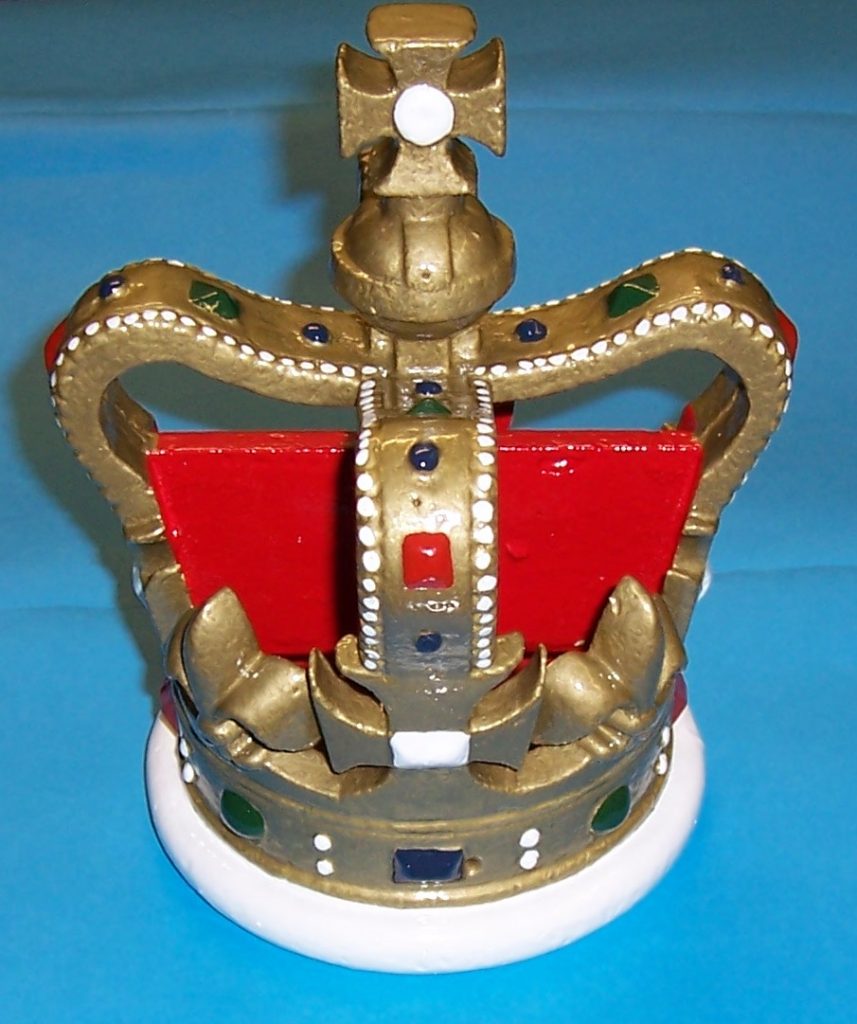

A two page article titled, “HMS Ausonia & Sisters” by Neil McCart, appeared in the Warship World magazine, Winter 1999, Volume 6, Number 9. The text in the article appears to have been taken directly from Neil’s book, Atlantic Liners of the Cunard Line from 1884 to the Present Day, which was first published in 1990.
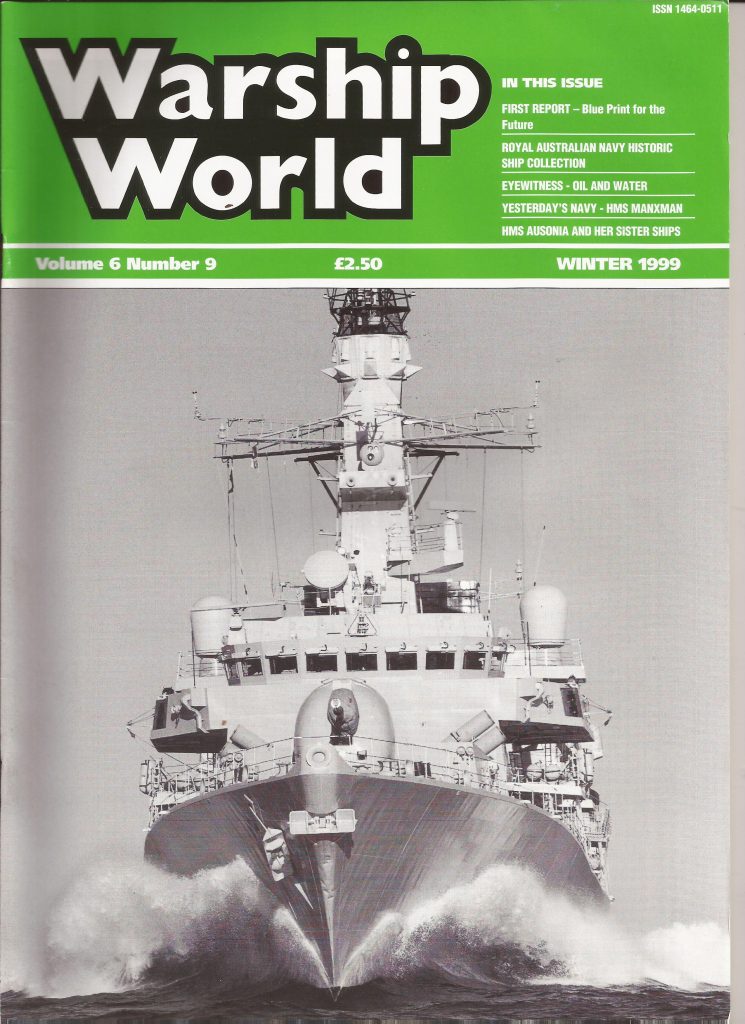


The stern and masthead electric lanterns which are reputed to have been removed from HMS Ausonia on her de-commissioning.
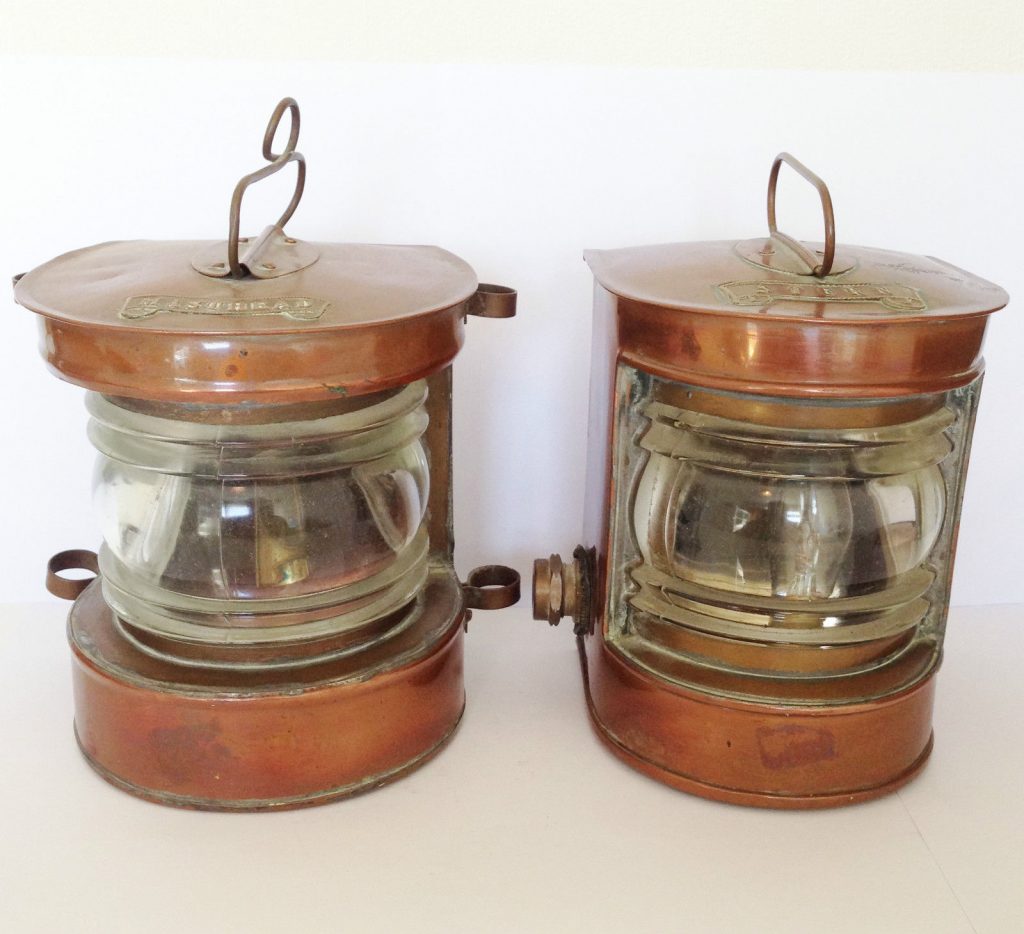
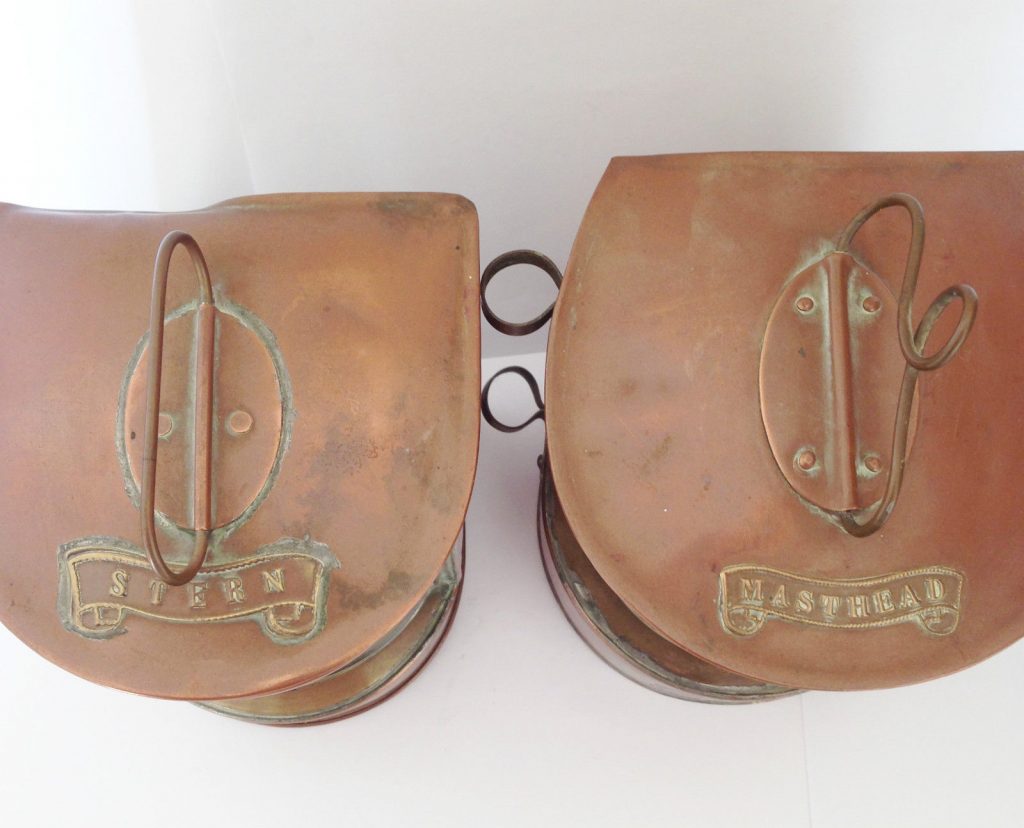
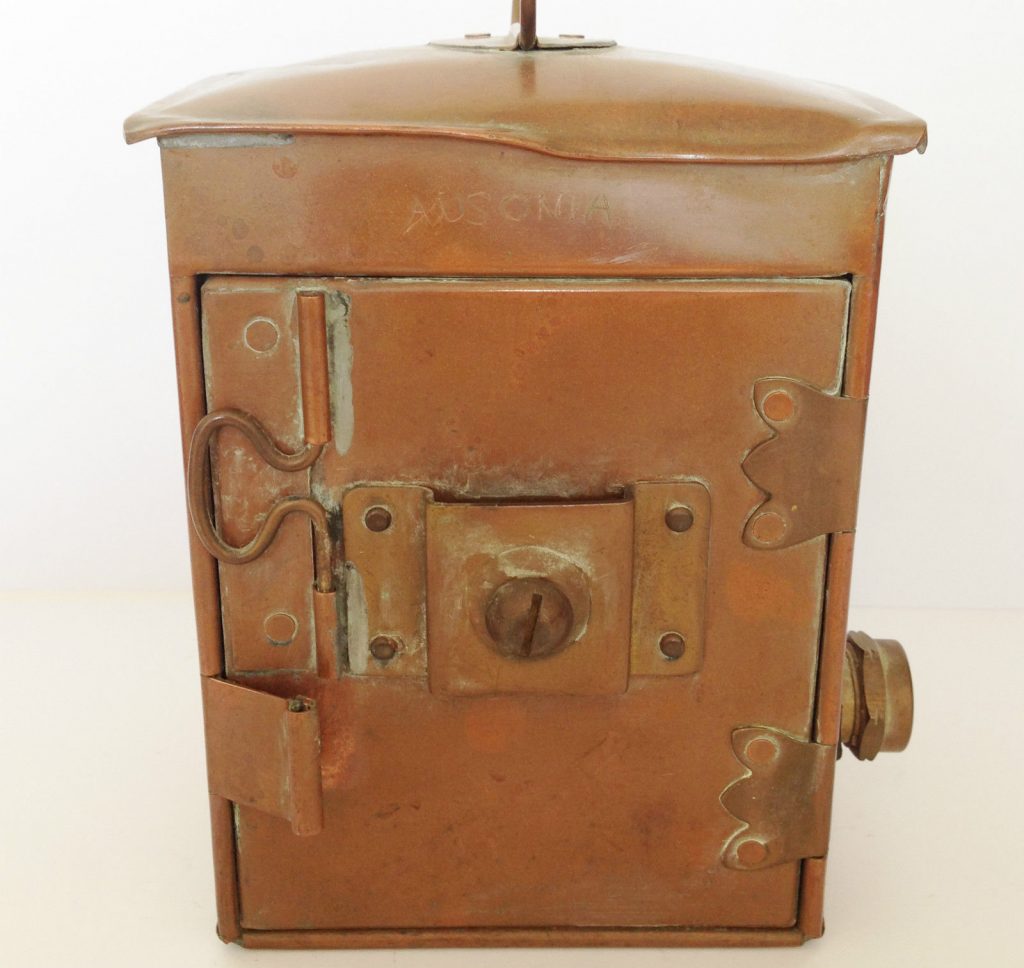

A Royal Navy Christmas card sent from HMS Ascania in December 1945.
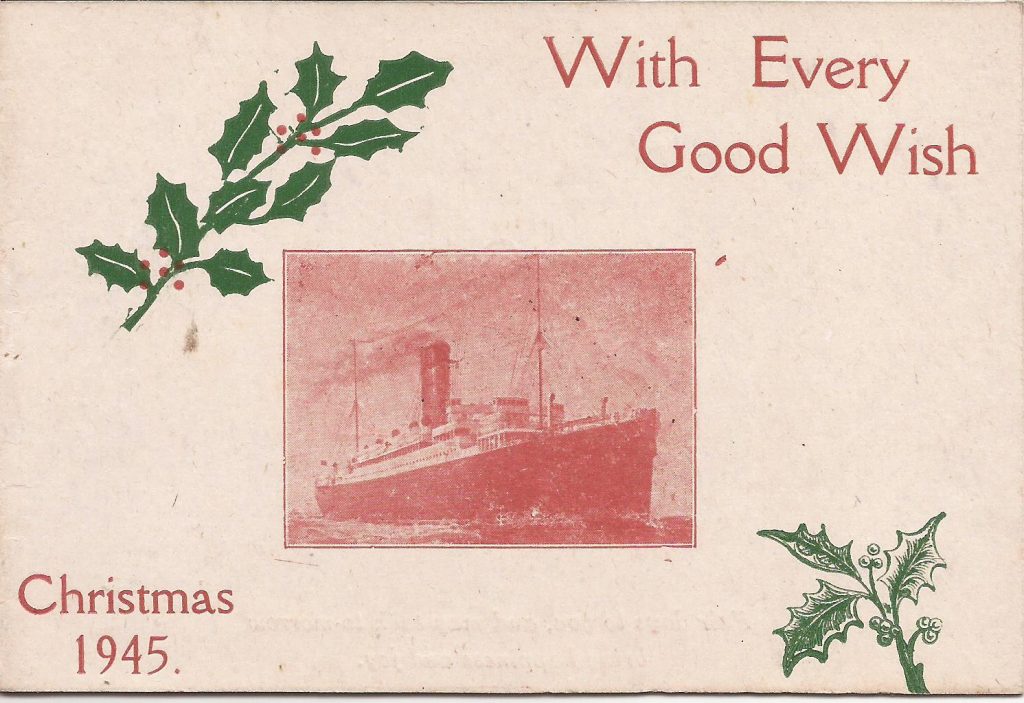
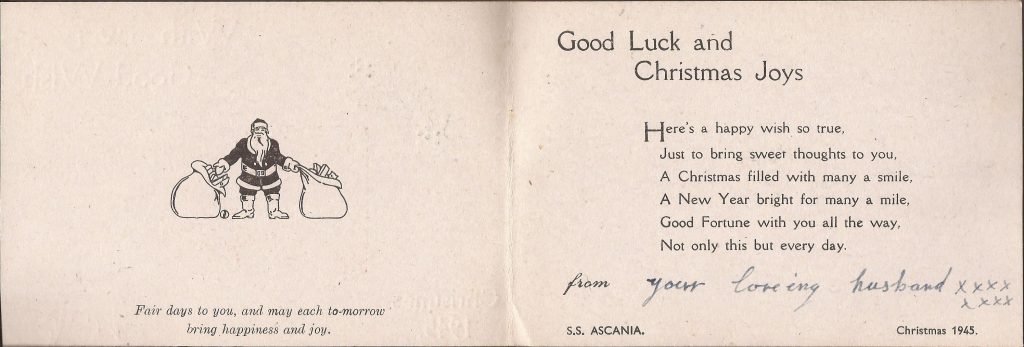
Ash Trays
Graham W. Leggett, now living in Nova Scotia, Canada, served on HMS Ausonia, from February 1962 through to the summer of 1963 as the Postie. During the Cuban missile crises in1962, HMS Ausonia was one of the many Royal Navy warships stored for war. Included in this provision were copper ash trays for the various messes.
Two of these ash trays were given to Graham as souvenirs, courtesy of a chief E.R.A. While they have no engravings or markings which indicate that they are from the ship, it is obvious by the thickness of the metal and the weight of them that they are not commercial and are typical of the sheet metal used by the R.N. at that time.
The ash trays have been very kindly given to me by Graham and I am honoured be their new custodian.
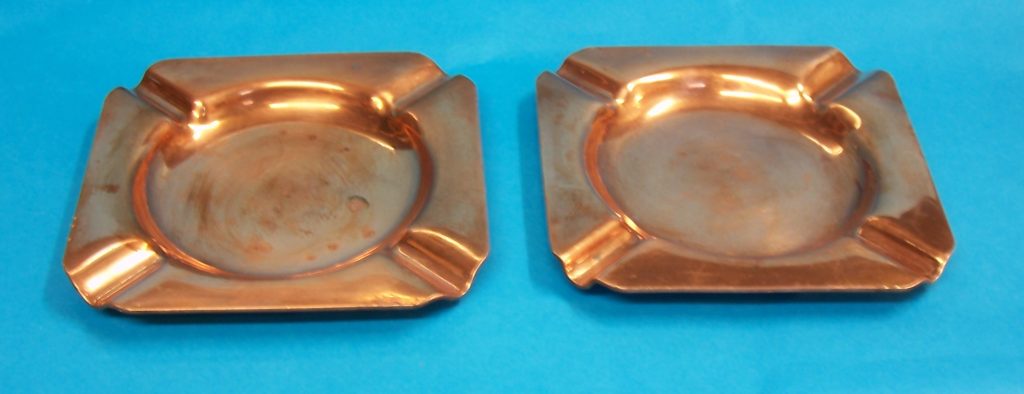
Souvenir Life Ring
A very unusual HMS Ausonia, artefact is this souvenir life ring. These life rings were a very popular souvenir in all the shipping lines on board gift shops, but this example clearly states HMS Ausonia.

Single Draw Telescope
In February 2018, this single draw telescope in its original leather case and with the eyepiece engraved with ‘Ausonia’ appeared at the Glasgow auction house called McTear’s. The telescope sold for £90.


HMS Artifex Photograph
On Wednesday 12th January 1994, this photograph of HMS Artifex appeared in a special warship edition of the Plymouth Evening Herald accompanied with a brief history of the ship.

Cigarette Case
A lovely example of the kind of “trinkets” that were produced by the crew in their spare time on board HMS Ausonia during the war years. This silver plated cigarette case, which it is assumed to have been made on board ship by one of the metal smiths, has been further enhanced with the ship’s crest, which was almost certainly cast in the ships foundry and then attached to the case.
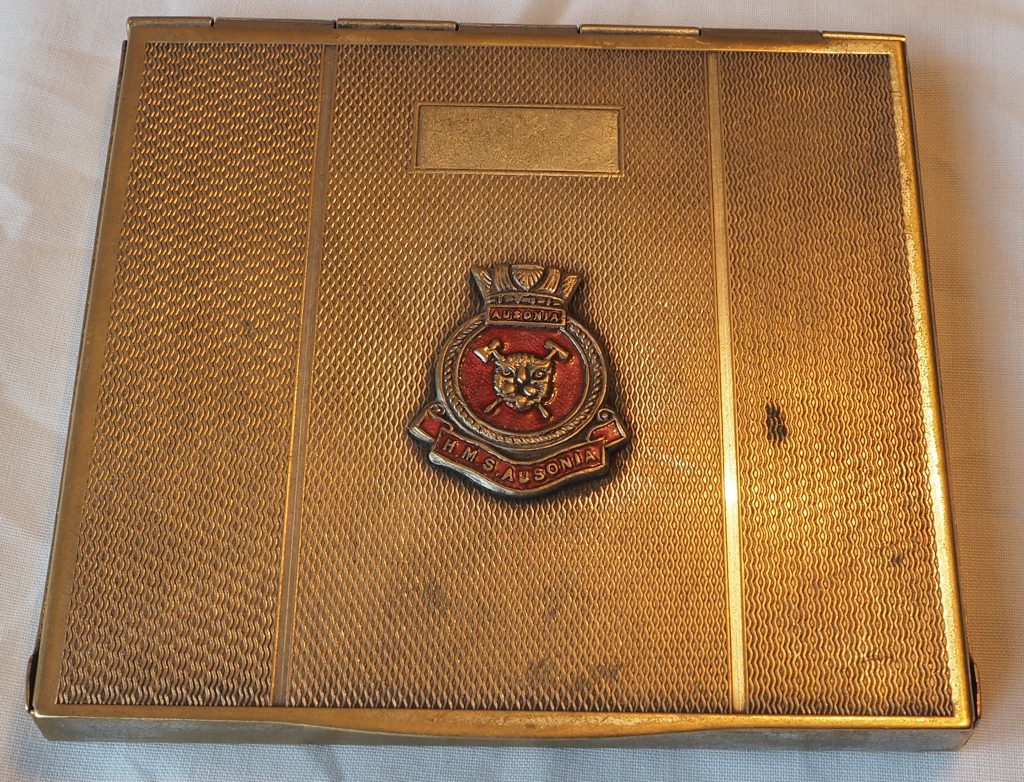

A metal bottle opener with the HMS Alaunia ships crest. It is unknown if this was made on-board Alaunia in the ships own foundry or manufactured ashore.
